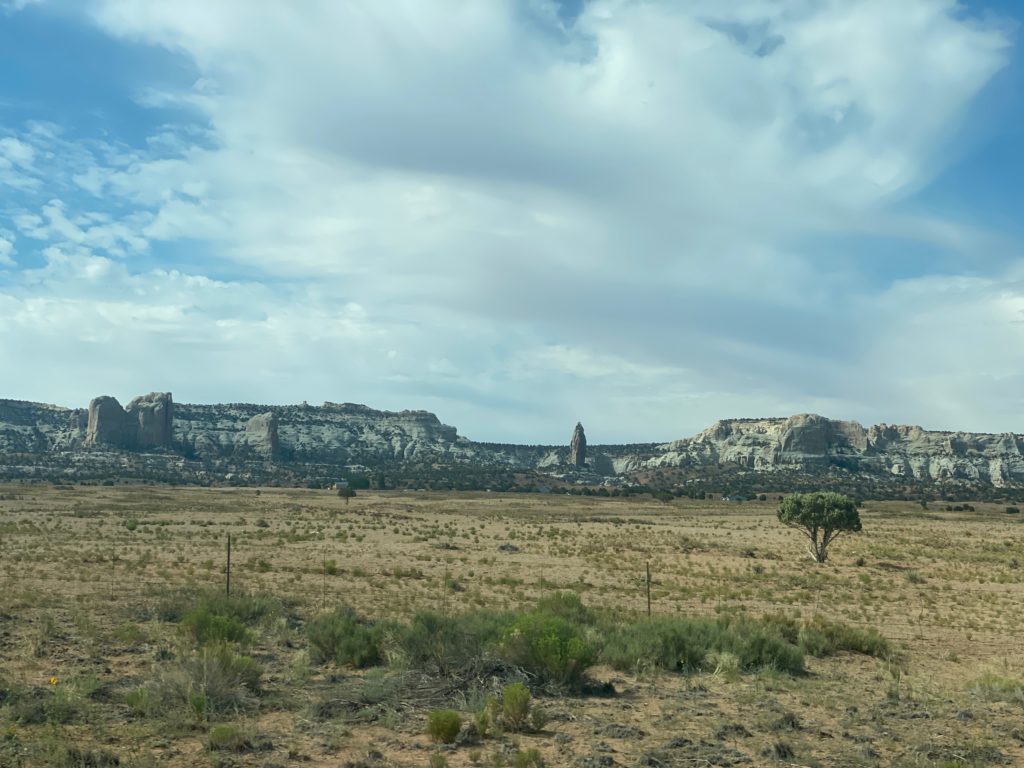
Today we left fairly early from our Zion hotel headed back East towards Monument Valley- a 4 hour drive. We passed cool formations and desert rocks along the way, but most of the drive we had already done on previous days.
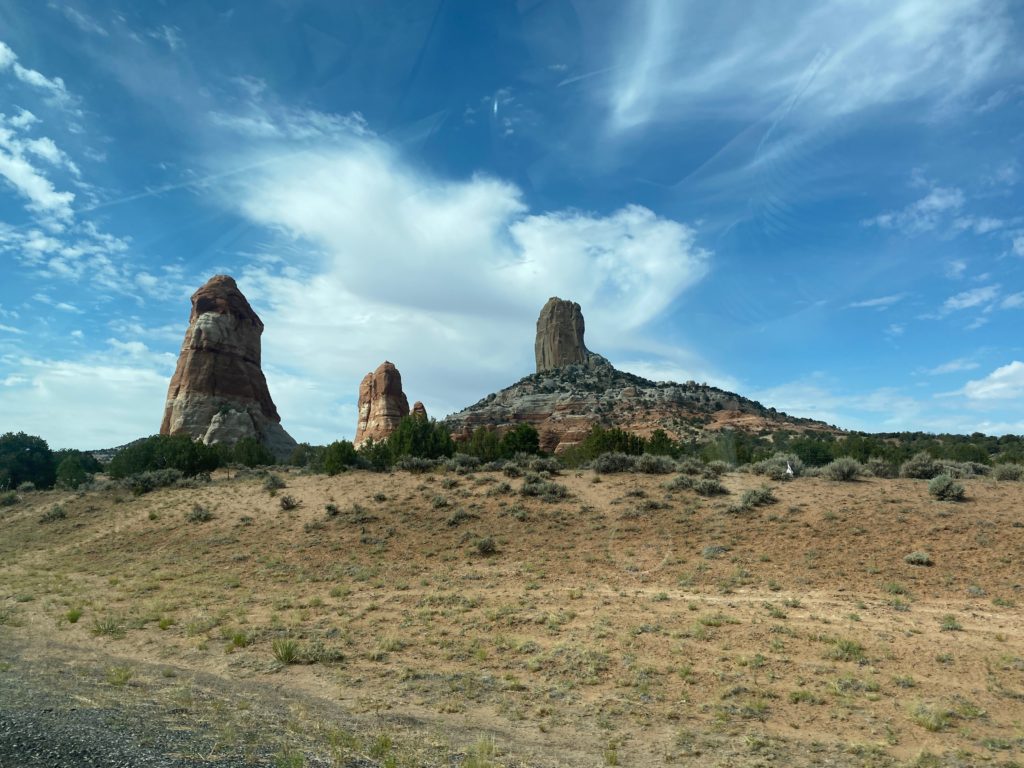
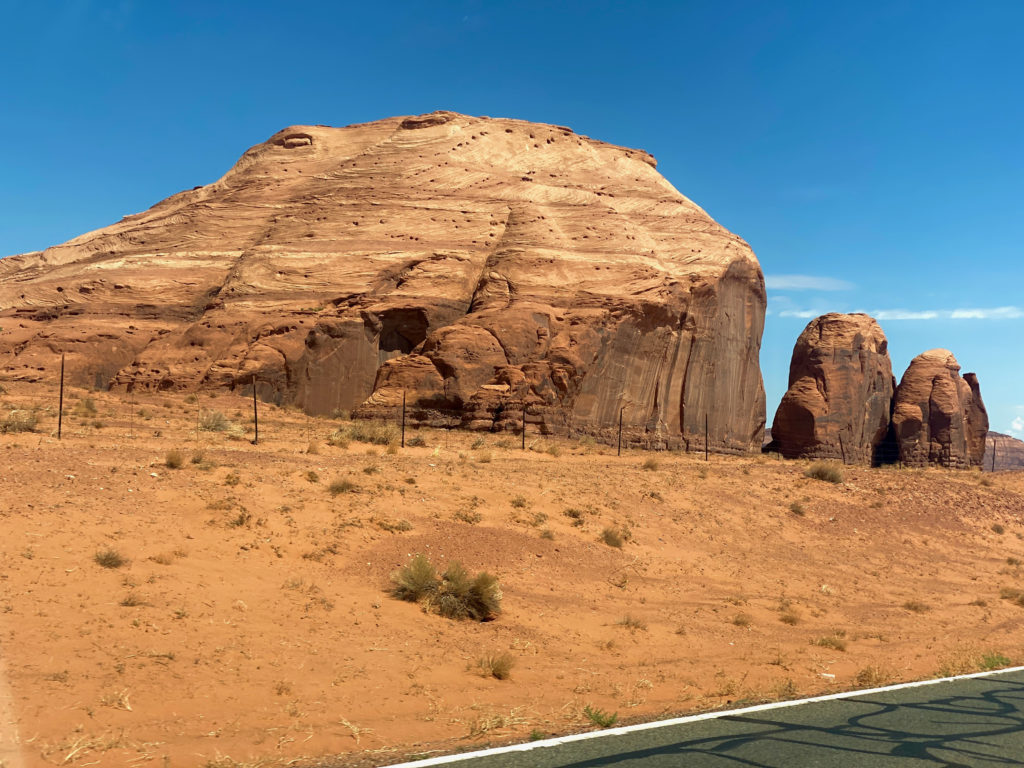
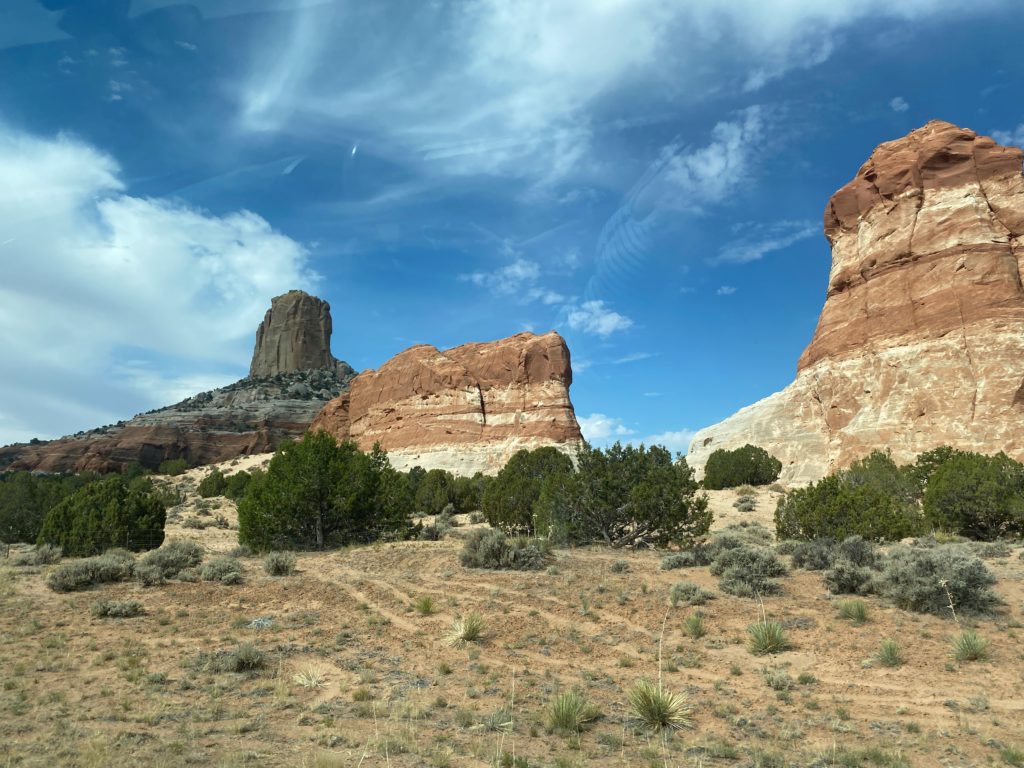
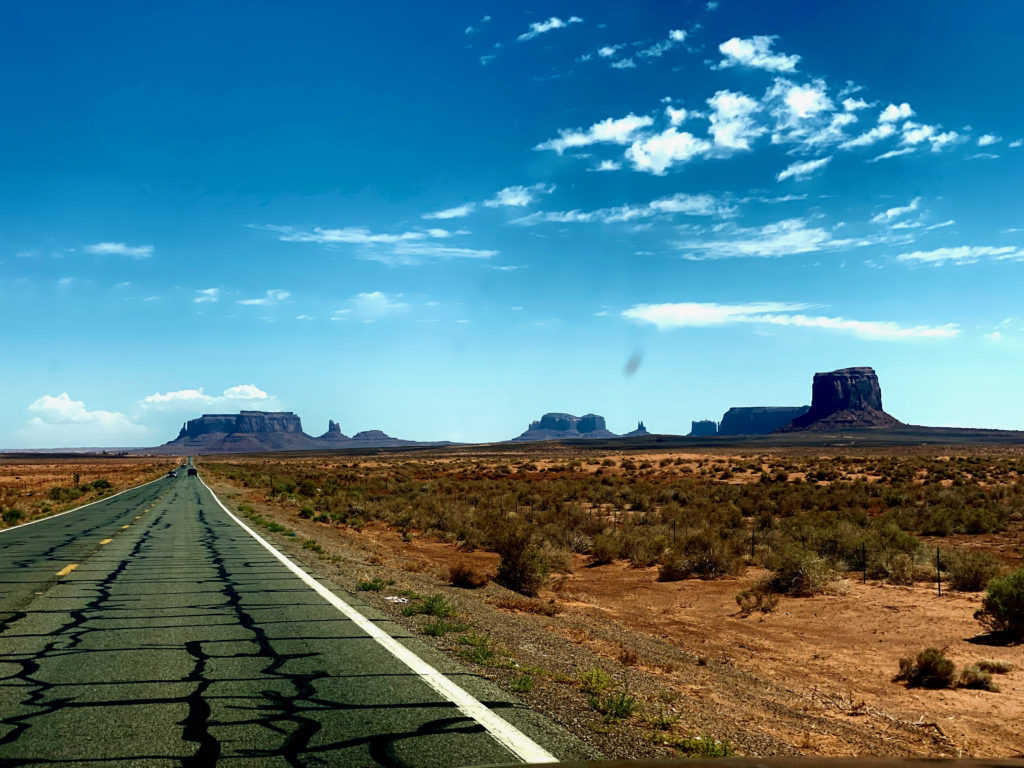
Monument Valley is actually a Navajo Tribal Park on the Navajo Nation (reservation land). It was used by director John Ford for so many of his Western films, that this area and these buttes and mesas are synonymous with “the West” as we think about it. John Wayne movies like The Searchers, Stagecoach, She Wore a Yellow Ribbon… Sergio Leon’s 1967 Once Upon a Time in the West, Easy Rider with Dennis Hopper, even new movies like Transformers and shows like HBO’s Westworld are filmed here. It’s an iconic landscape. The most well-known Monument Valley shots in a film are probably the end of Forrest Gump’s cross country run. There is even a sign along the highway to show you the spot!
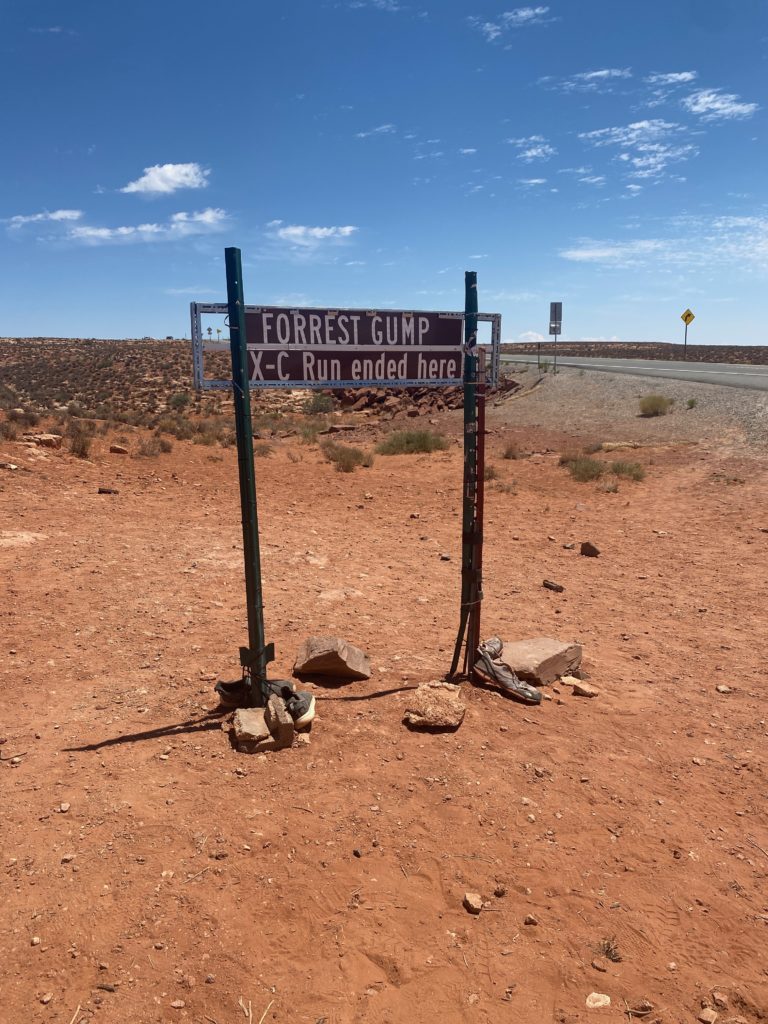
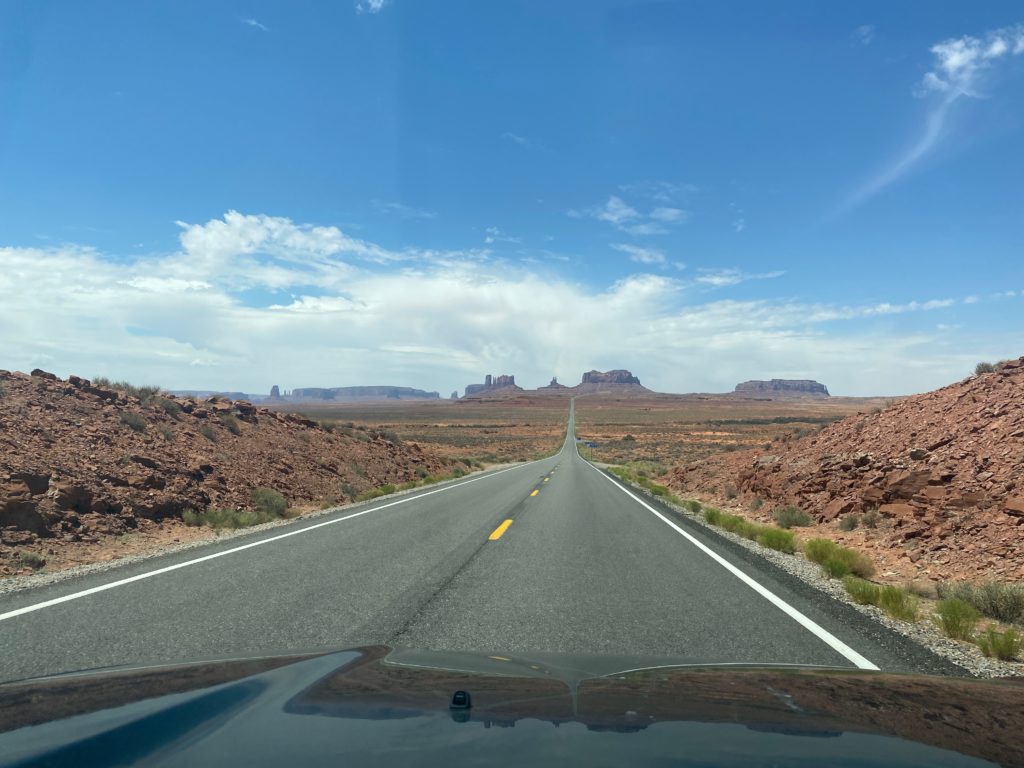
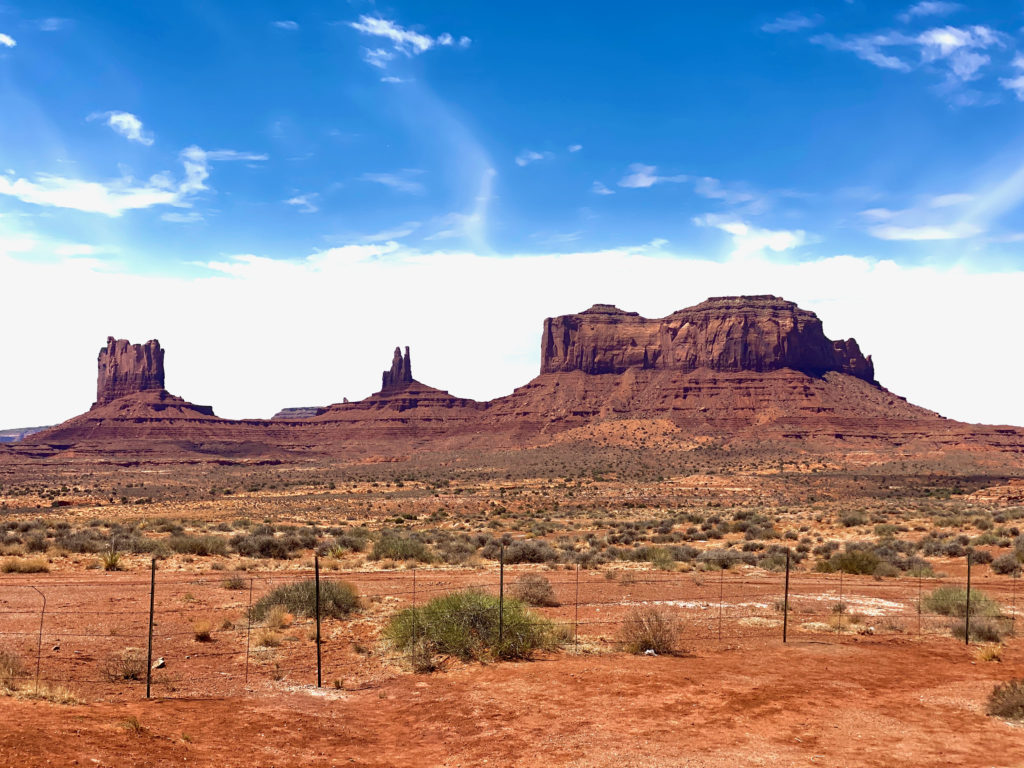
It was what I was most looking forward to on this trip to be honest. But… its still closed. All Navajo lands are still closed to visitors. The council passed a resolution to open back up on July 2nd- but it isn’t in effect until the President signs it… so we were waiting every day up to July 4th waiting for his signature. He has 10 days to sign it… so the latest they will open is July 12th. But that didn’t help me. ha I am positive the president was waiting for the busy holiday weekend to pass before signing. I expect it July 7th. That’s OK. We could see a lot of the Monuments from the highway and if the leadership of the Navajo think it needed to wait, then we’ll wait. It didn’t stop us from taking some awesome FREEDOM pictures in front of the monuments.
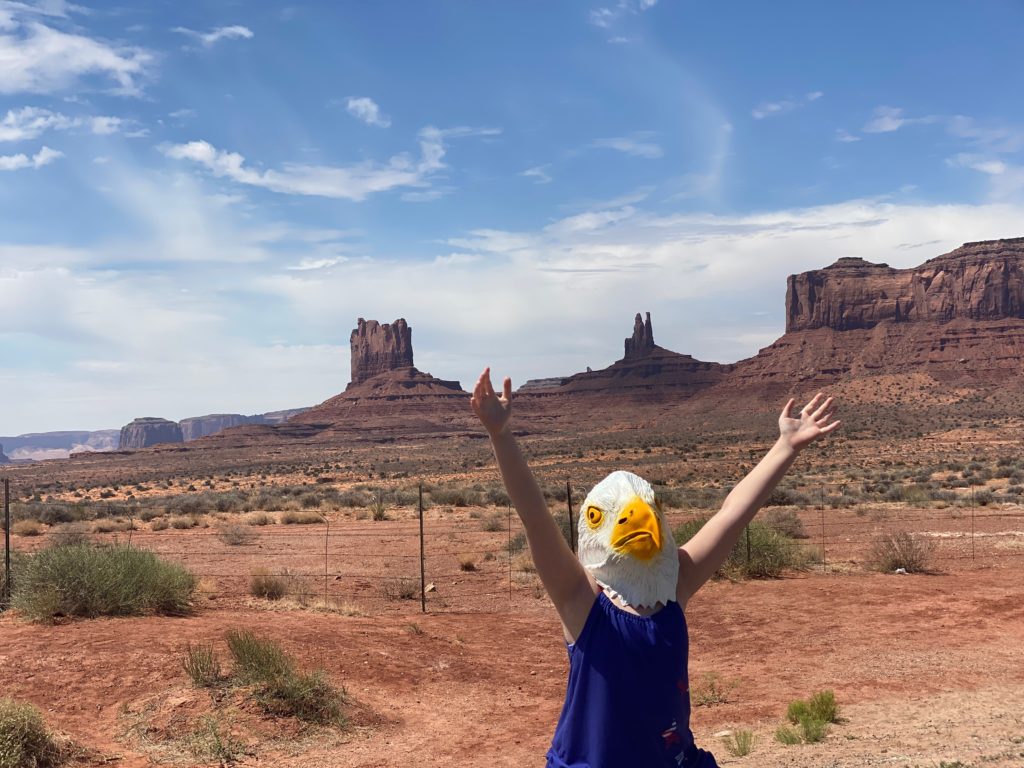
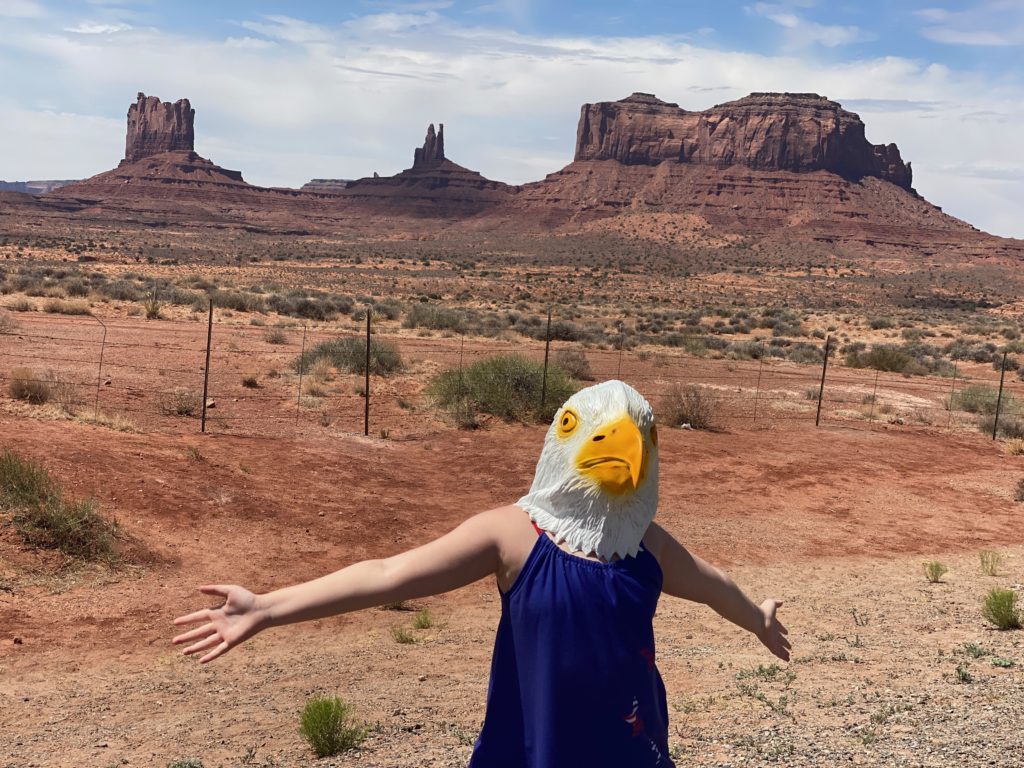
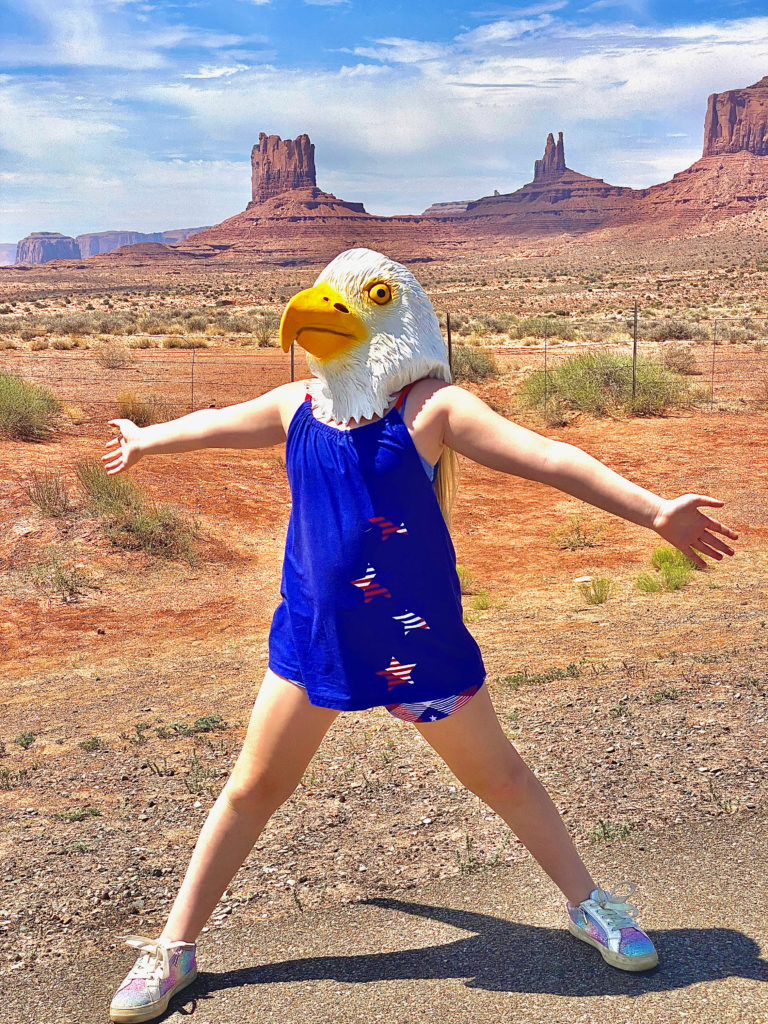
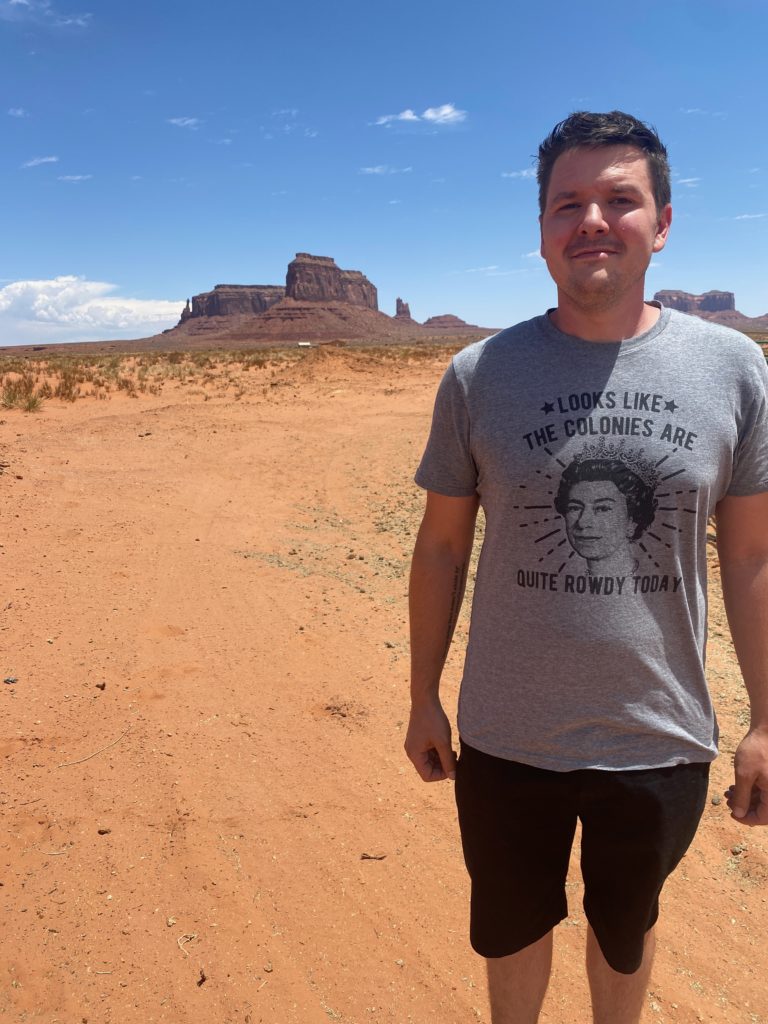
(The irony of taking American Independence photos in front of an Indian reservation while wearing a British Colony Tshirt was not lost on us and I’m incredibly disappointed no one mentioned either.) haha
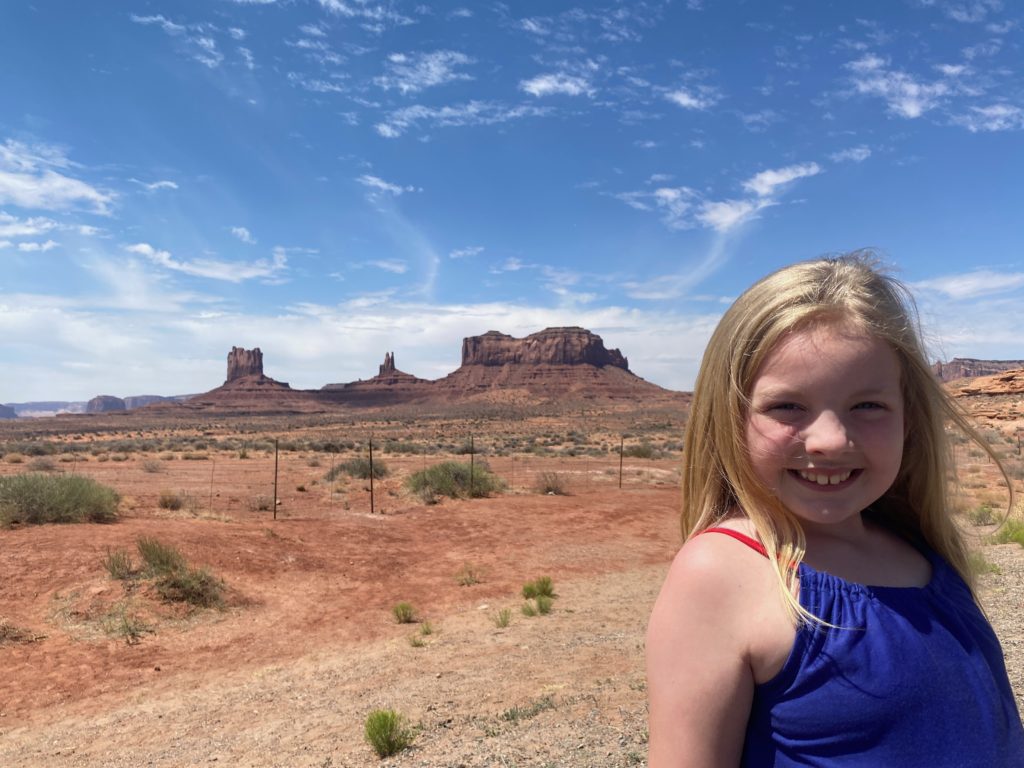
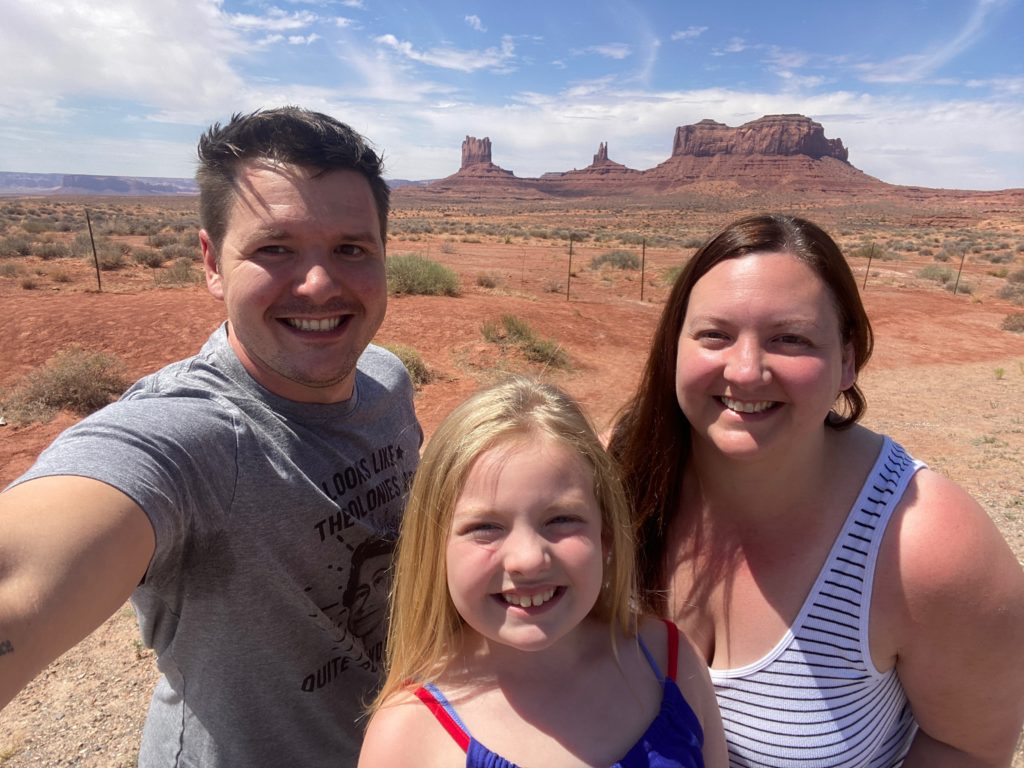
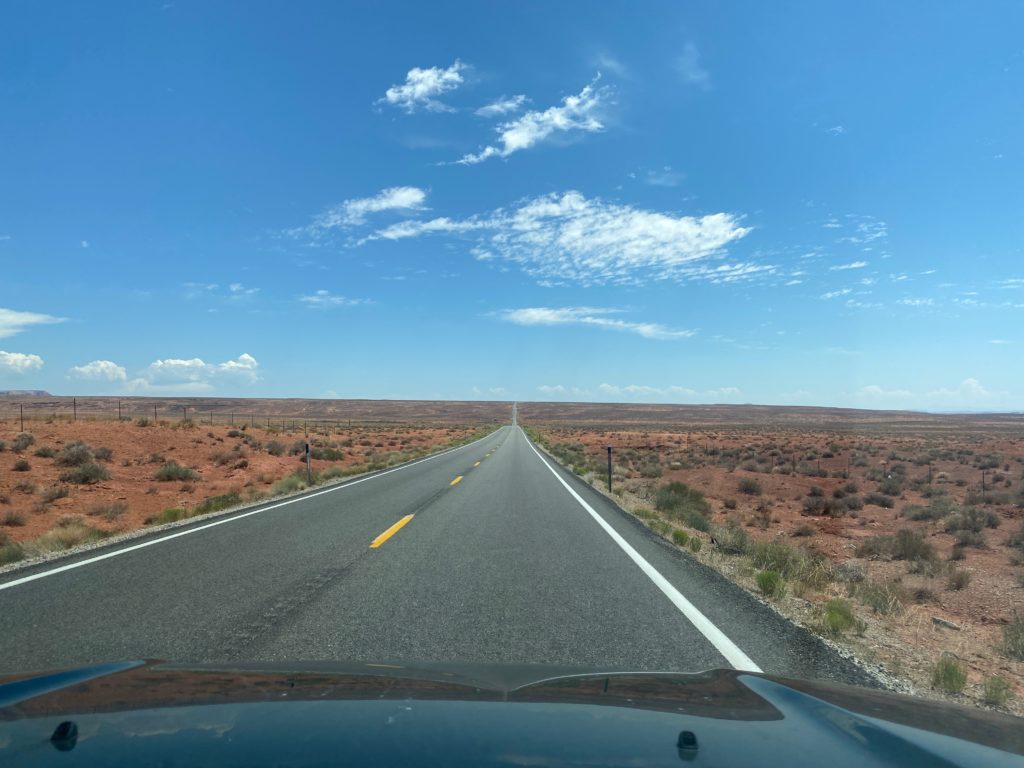
We continued on past the monuments into nothingness for a bit to see Mexican Hat Rock before our scheduled guided tour.
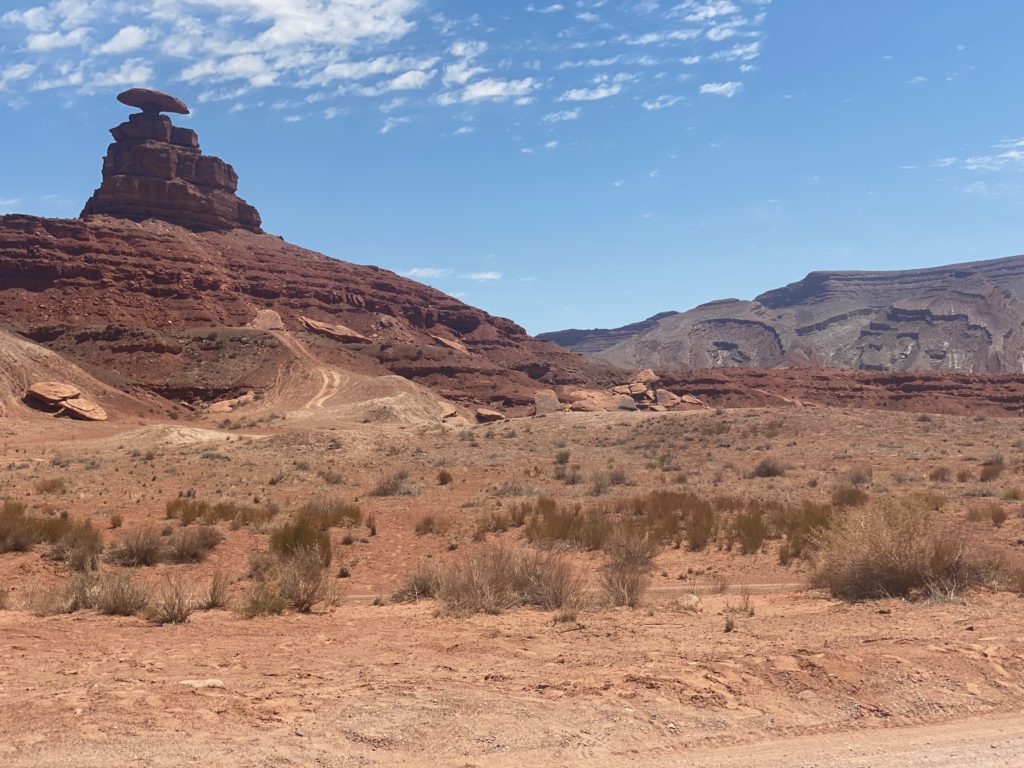
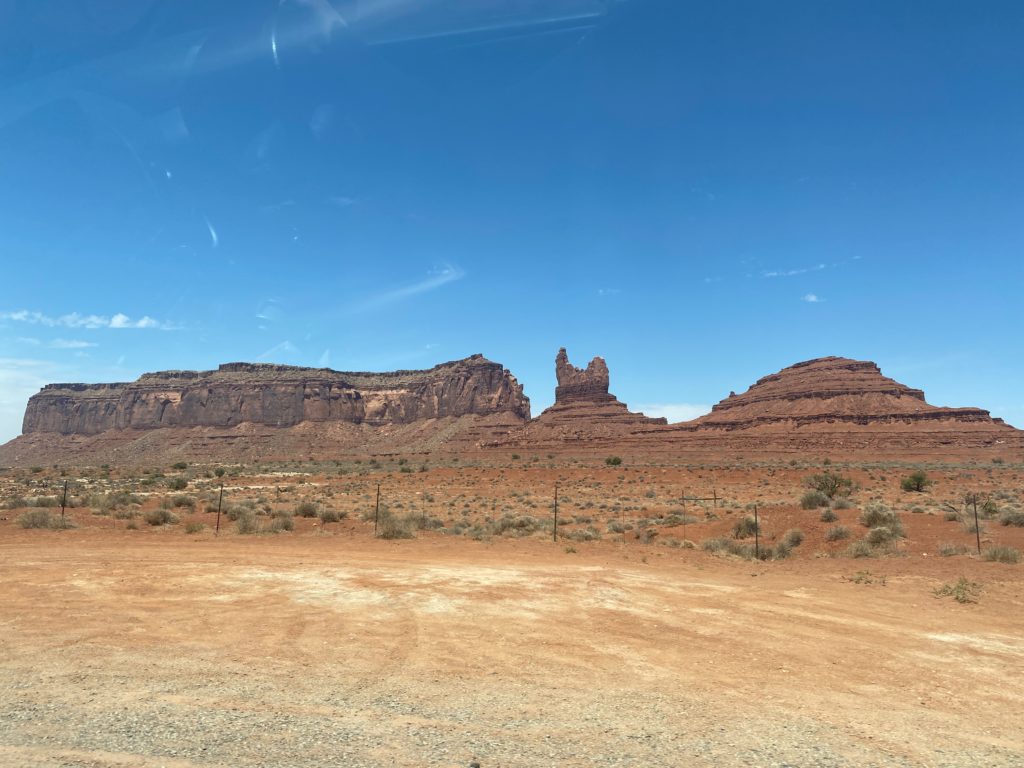
We had booked a Monument Valley Tribal Tour with a Navajo guide for today…but with the park closure, we were playing it by ear for what we would be able to see. The owner called me a couple days before so see if we still wanted to do an alternate tour or cancel if we couldn’t do the 17 mile loop through the park… we elected to keep it. I wanted to be able to talk to and ask questions of someone Native American who lives on the reservation. We arrived at the campground and parked but there was no one around… except some horses that came to say hello.
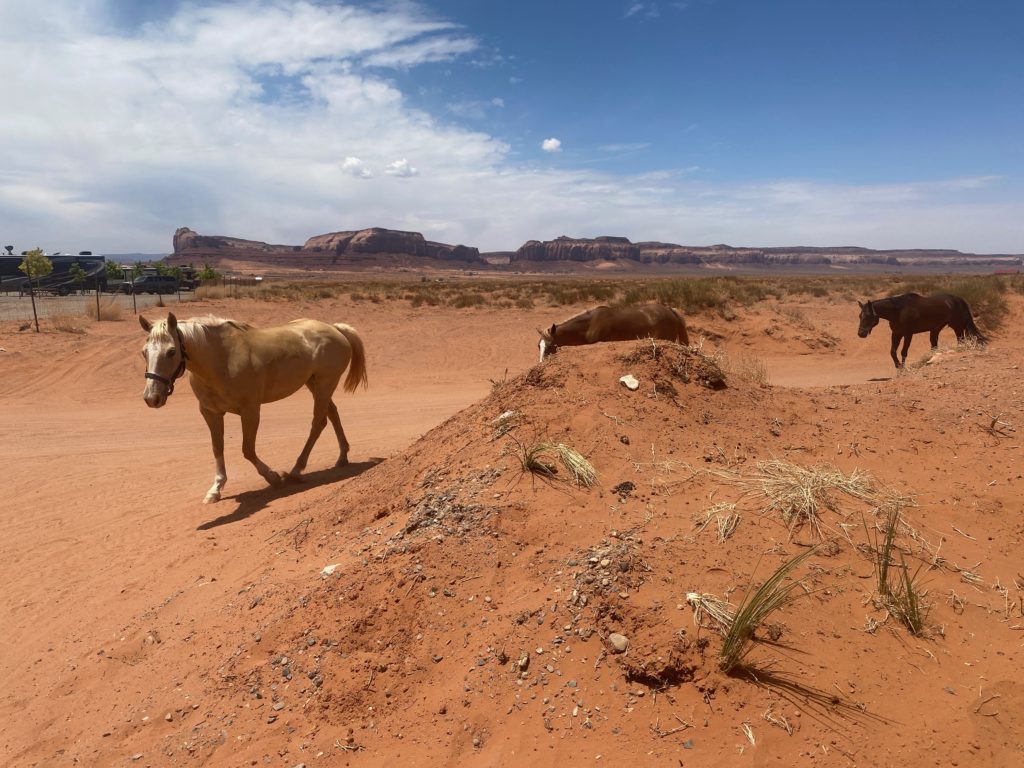
Turns out our guide was in the campground office where they had air conditioning instead of her little shed building and had taken a nap and didn’t see us pull in. ha I’d take a nap, too. It was hot.
We piled into the safari truck (private tour- just the 3 of us) and we decided we’d go back through town out a sand dune road to Teardrop arch and get some higher views of the Valley.
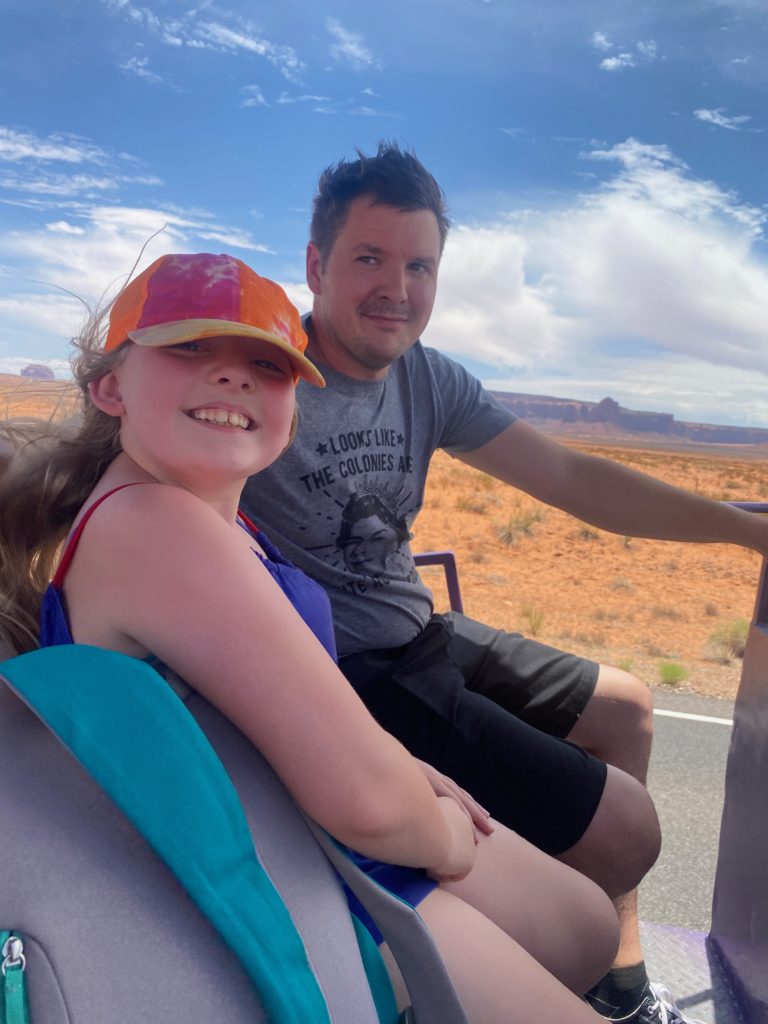
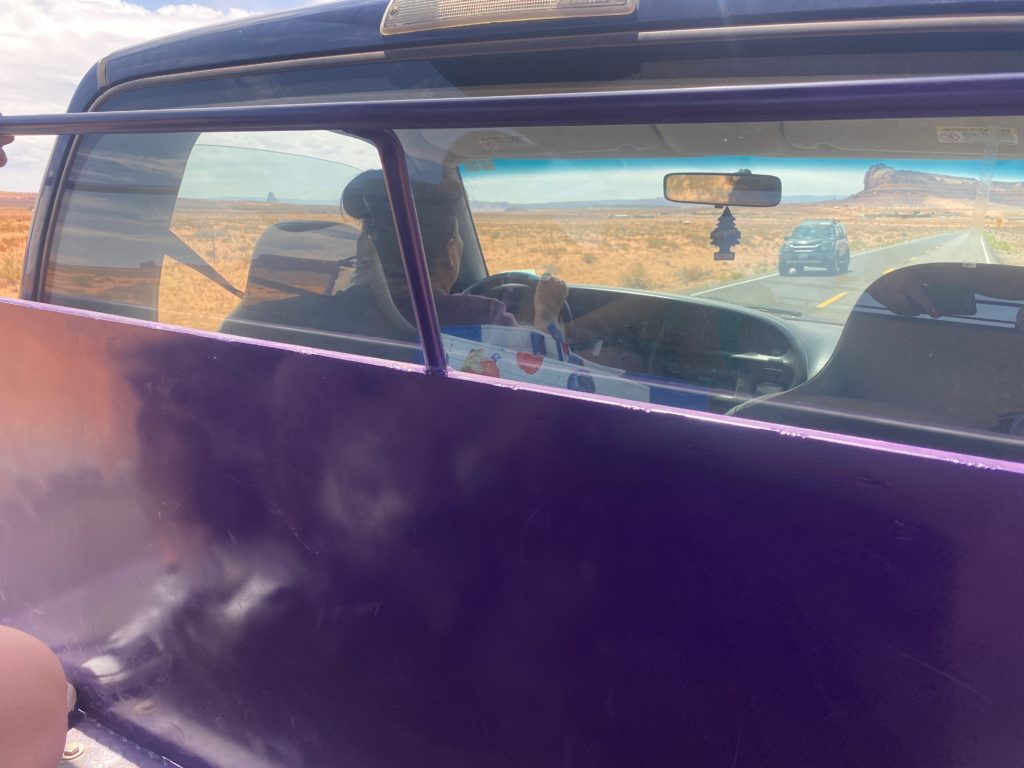
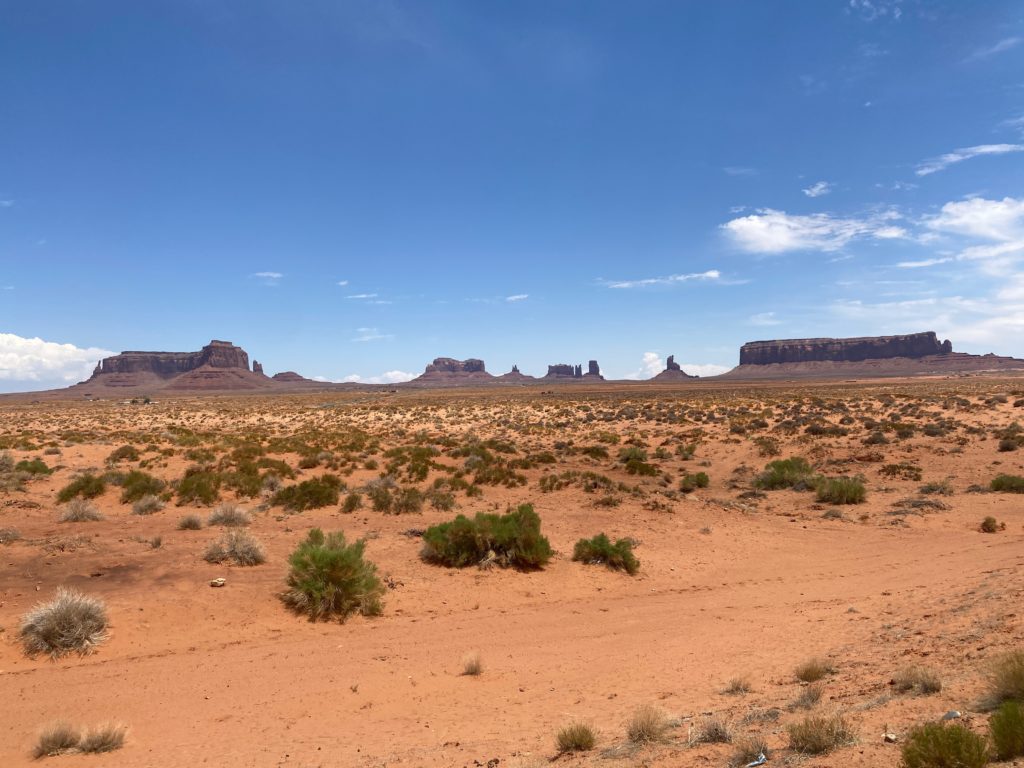
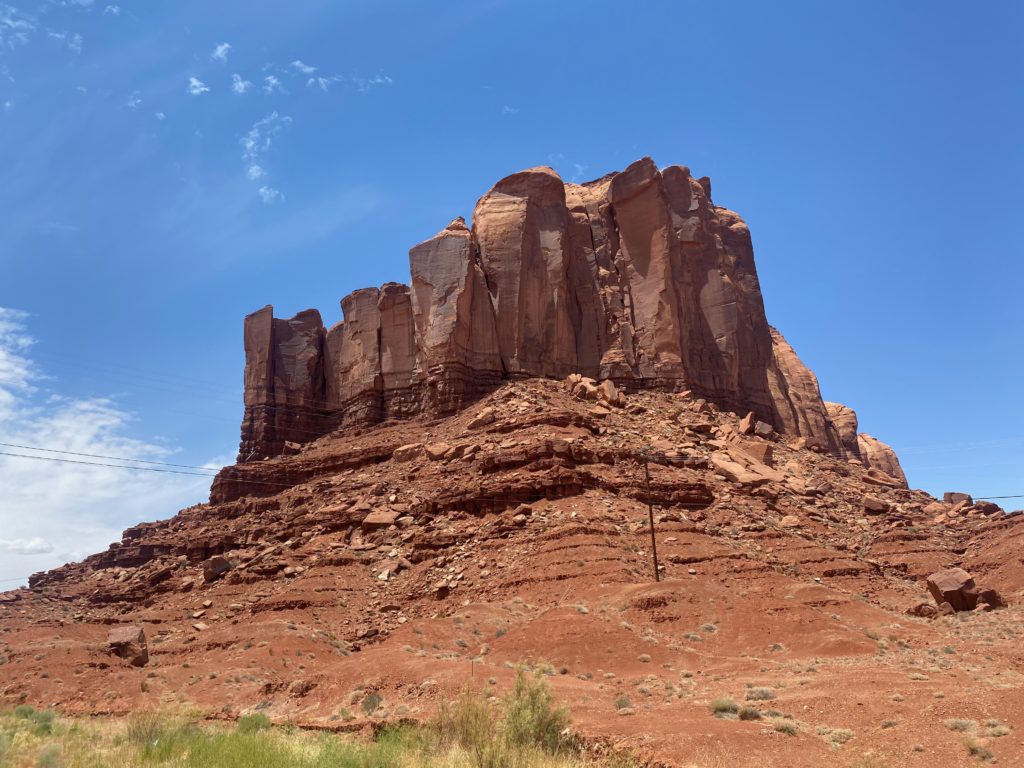
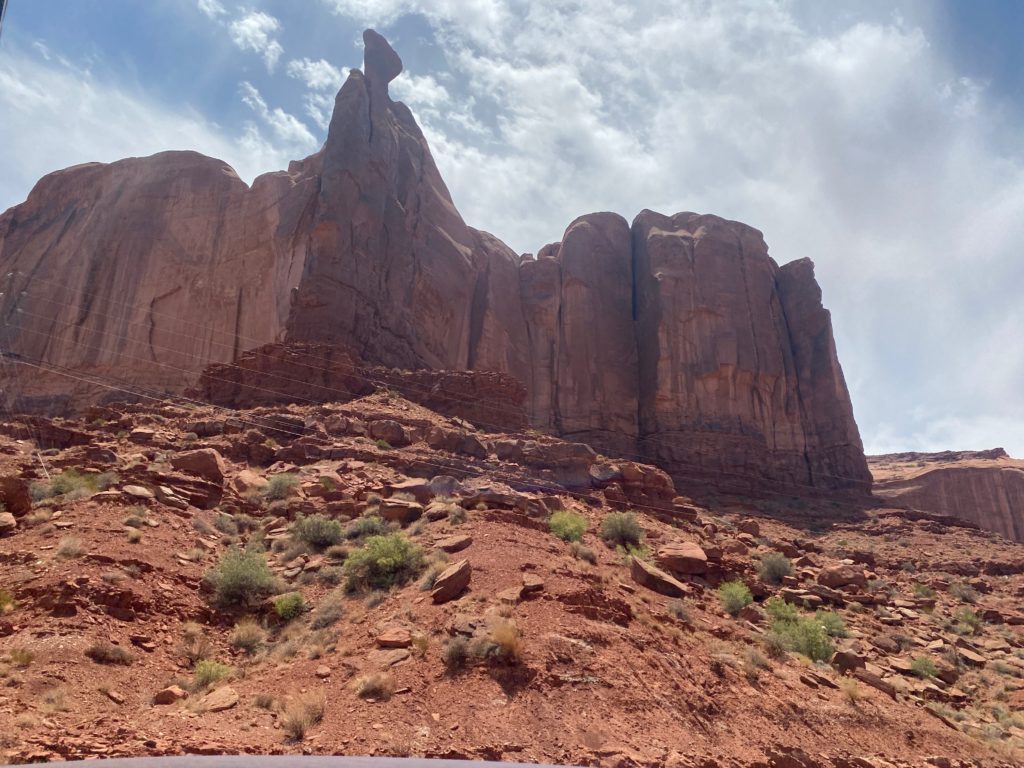
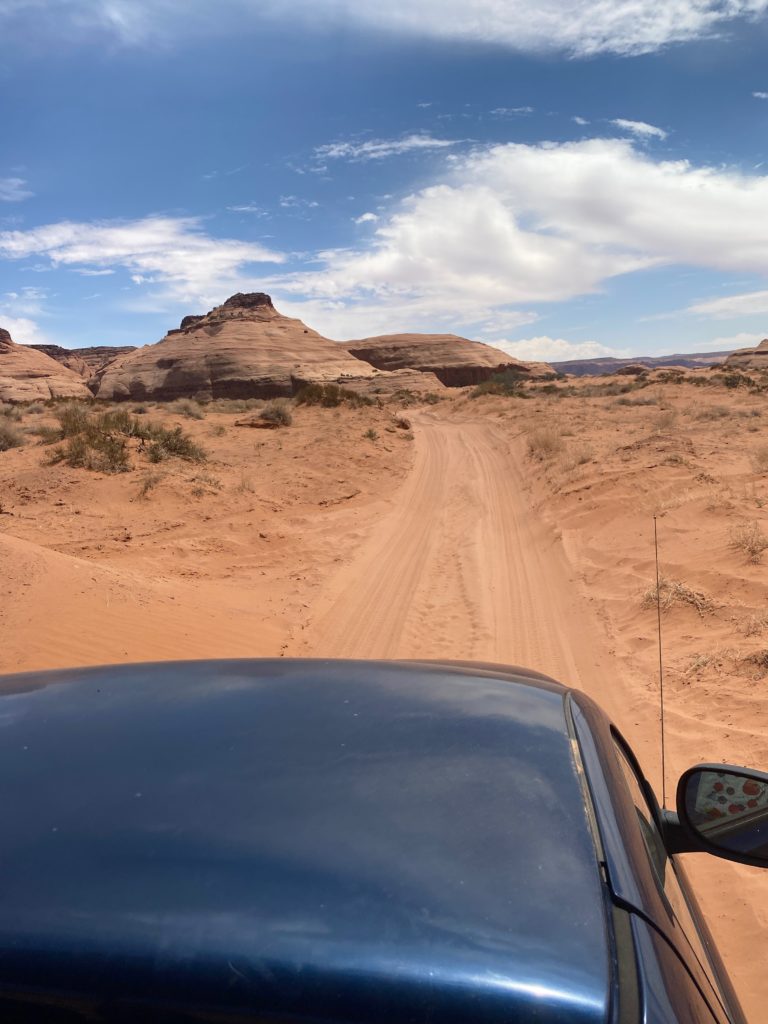
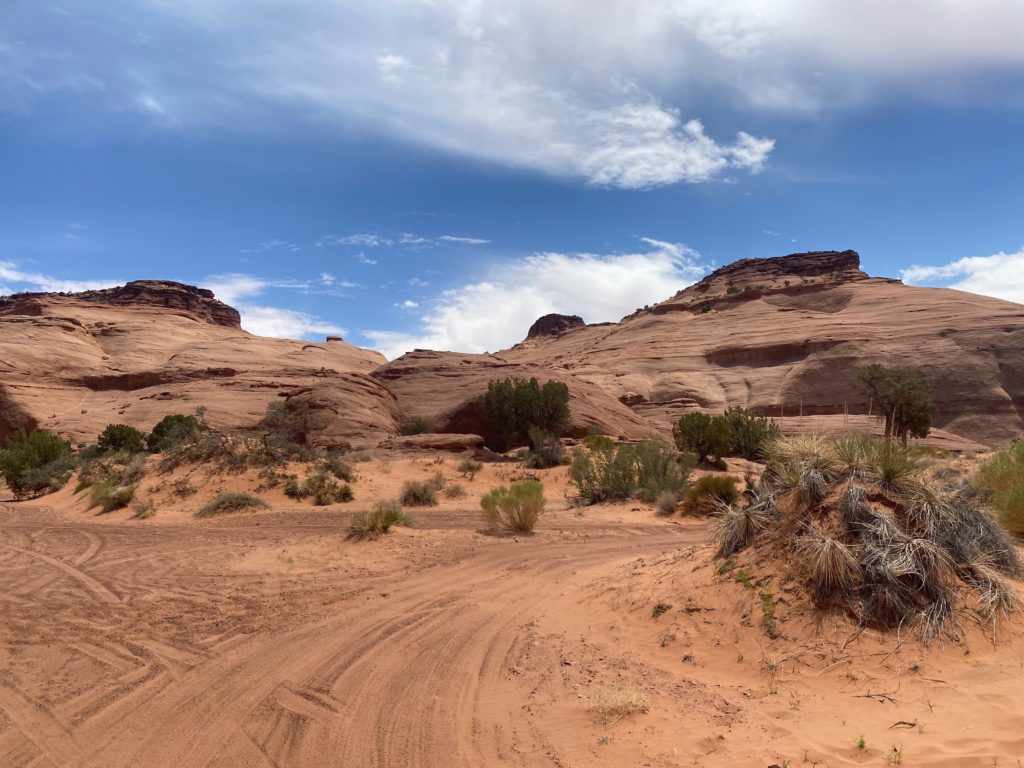
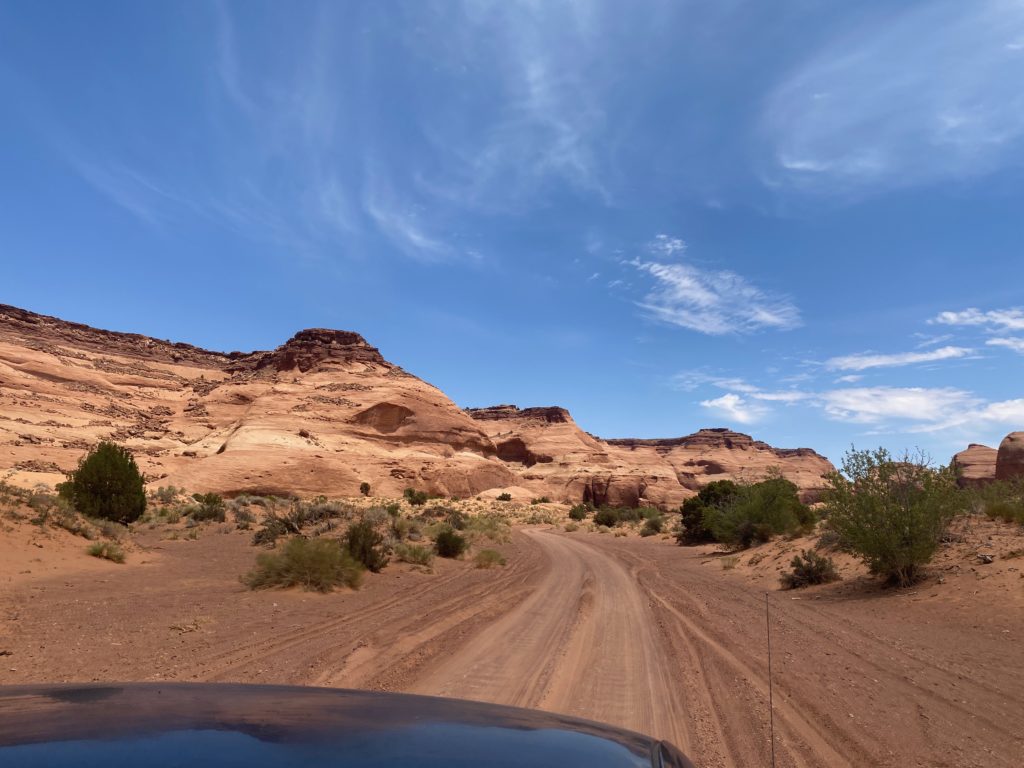
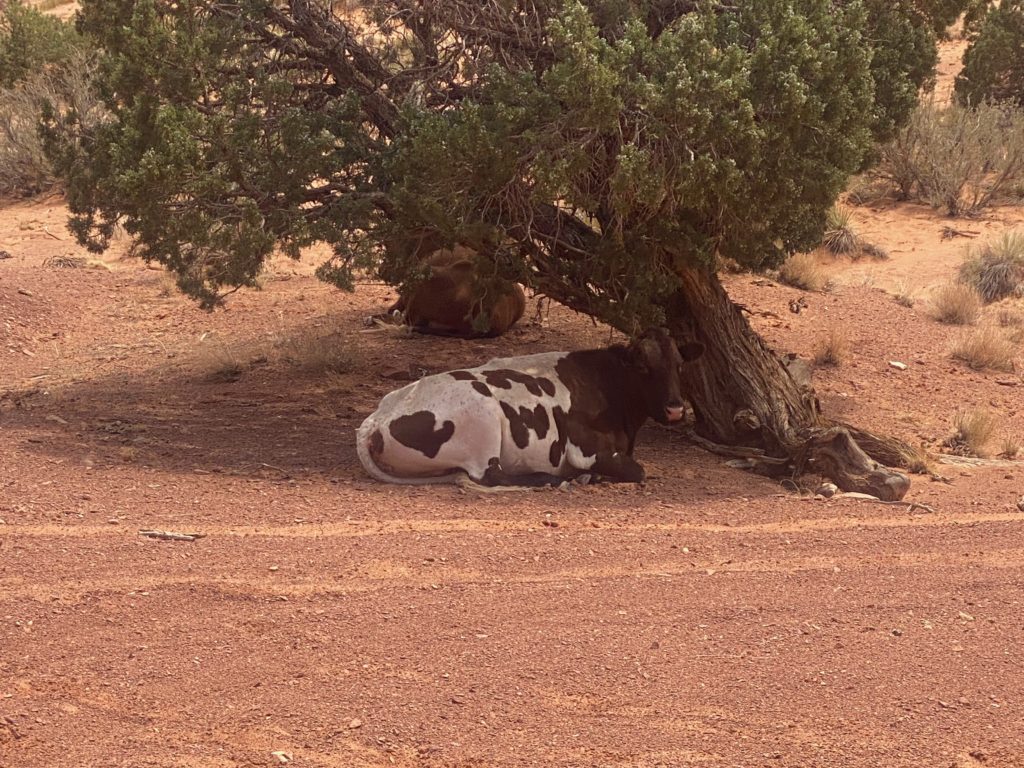
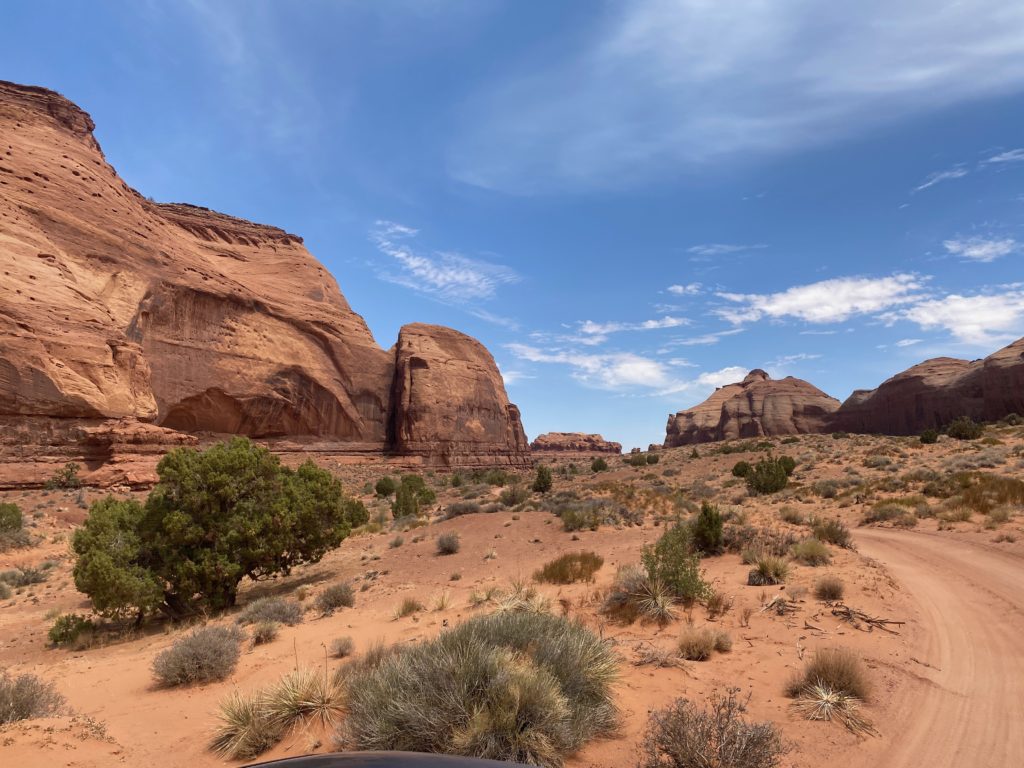
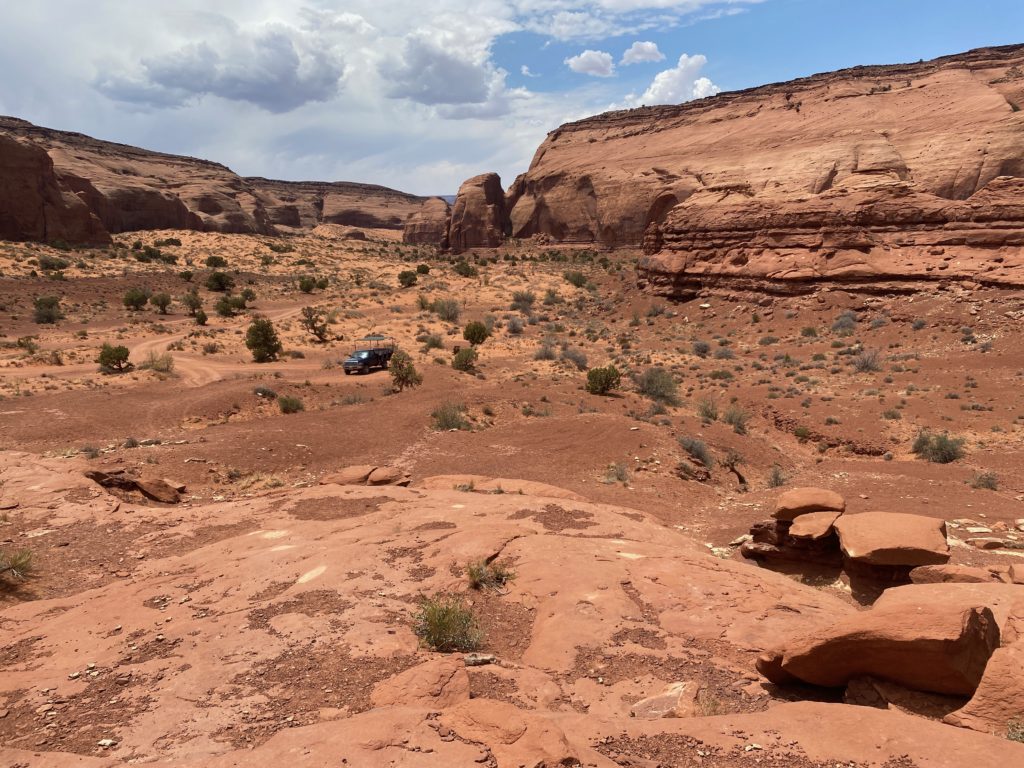
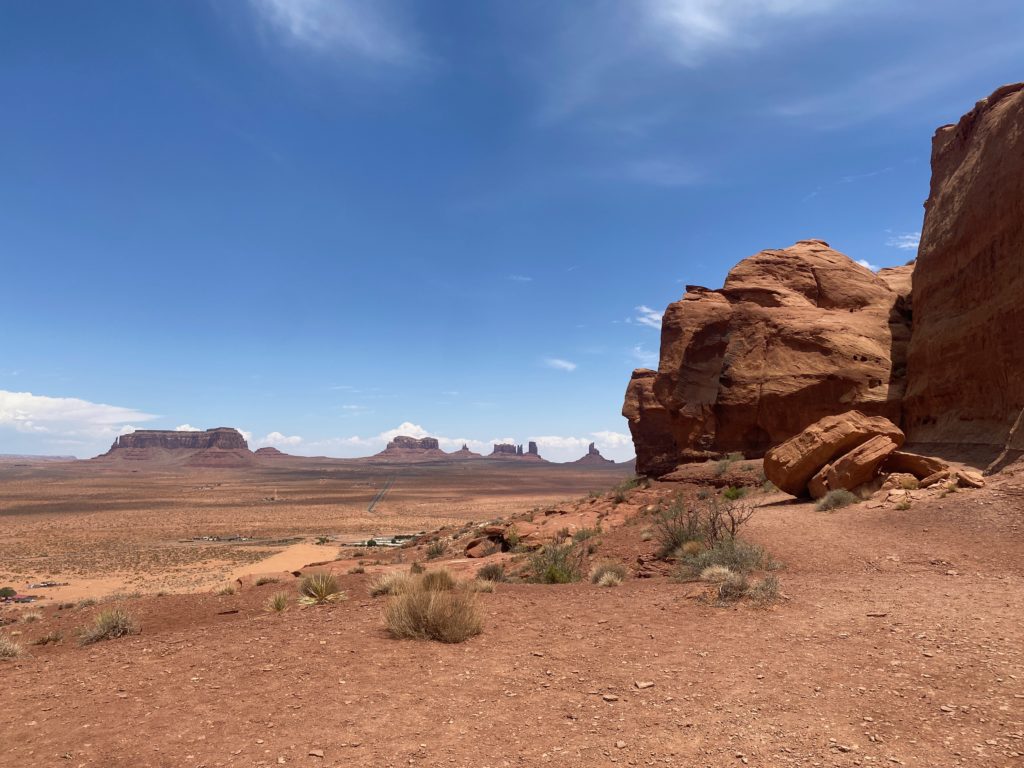
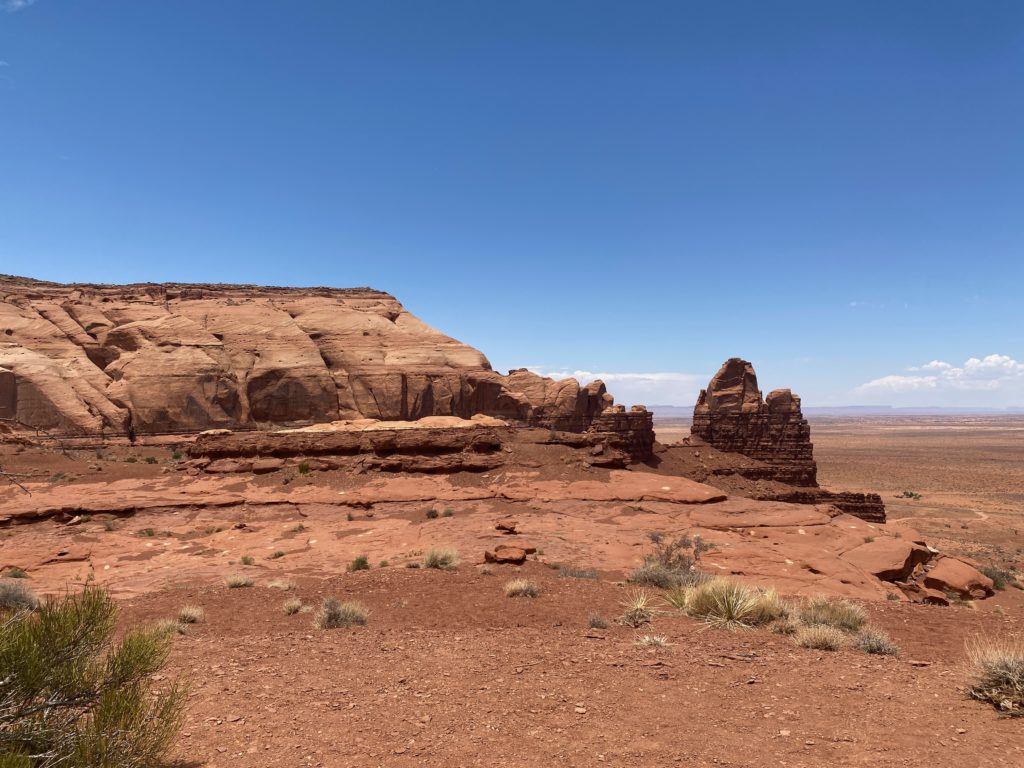
As we got towards the top she said “OK, give me your phone. You stand here, then run around, then stand here, then run around me again”… we were a little confused, but finally figured out what she was saying. She was going to get a cool panorama of us. Grandma had photo tricks!

We walked around to the “arch”- which arch is a stretch, but still a great alternative to not going on a tour.
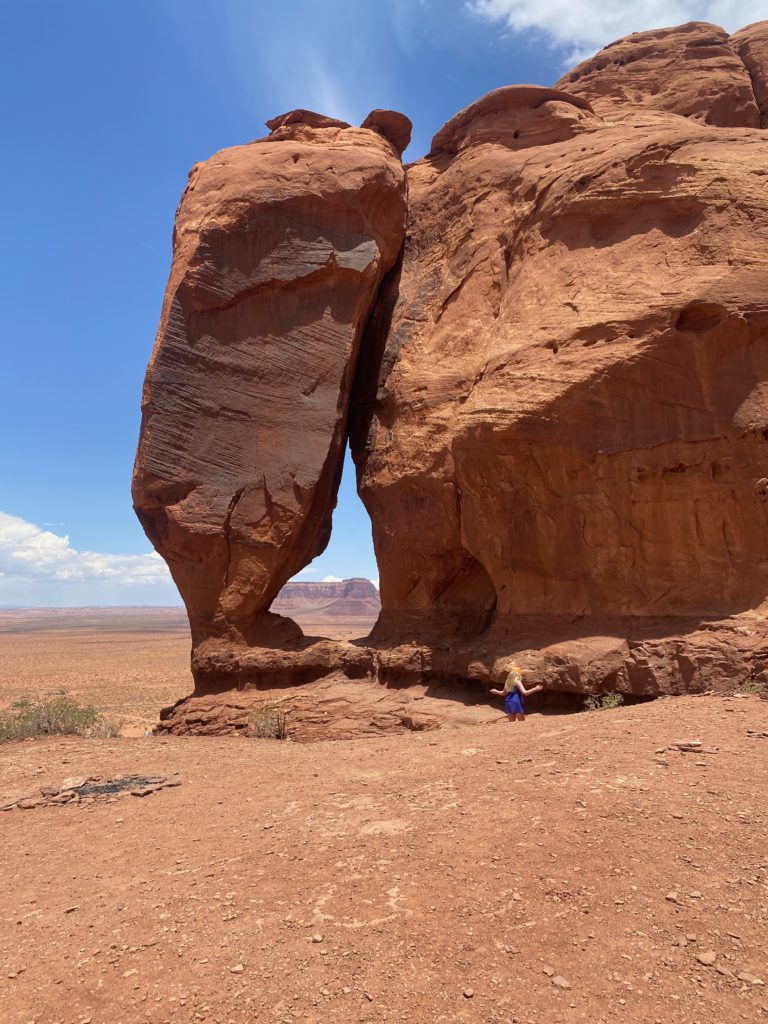
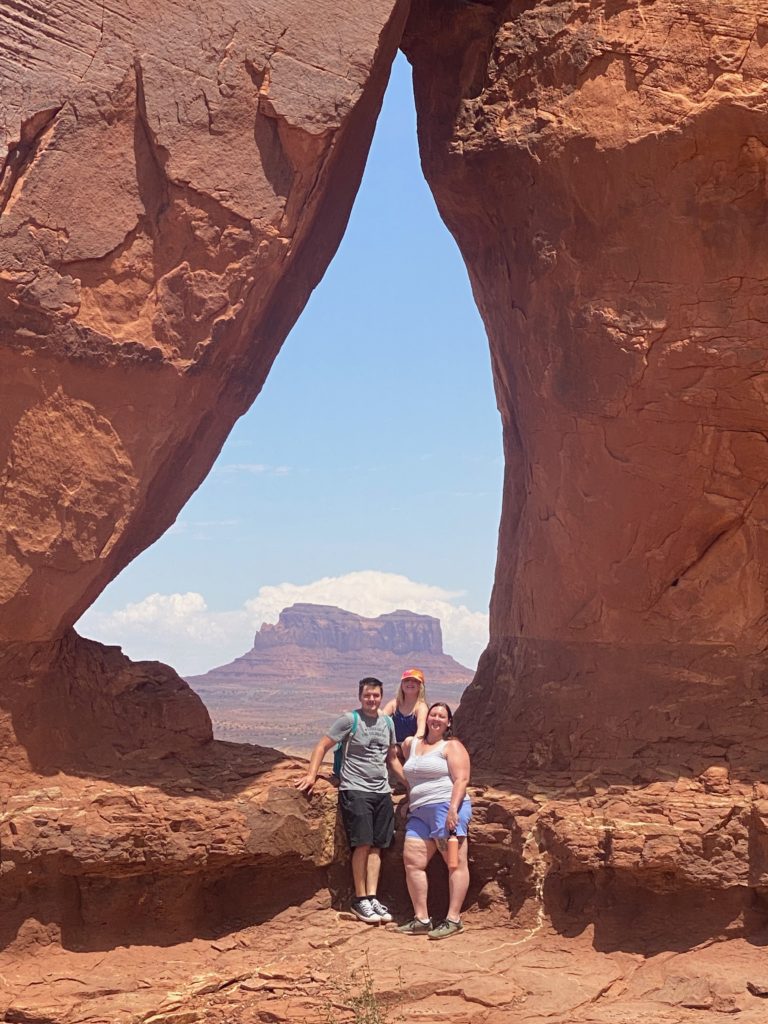
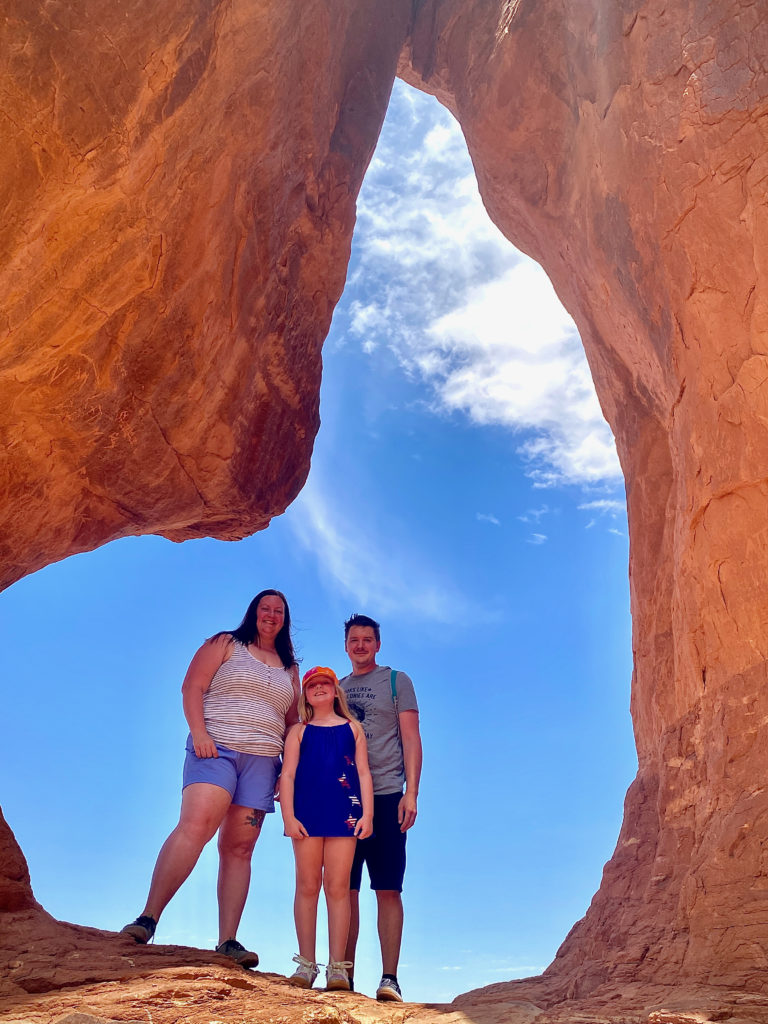
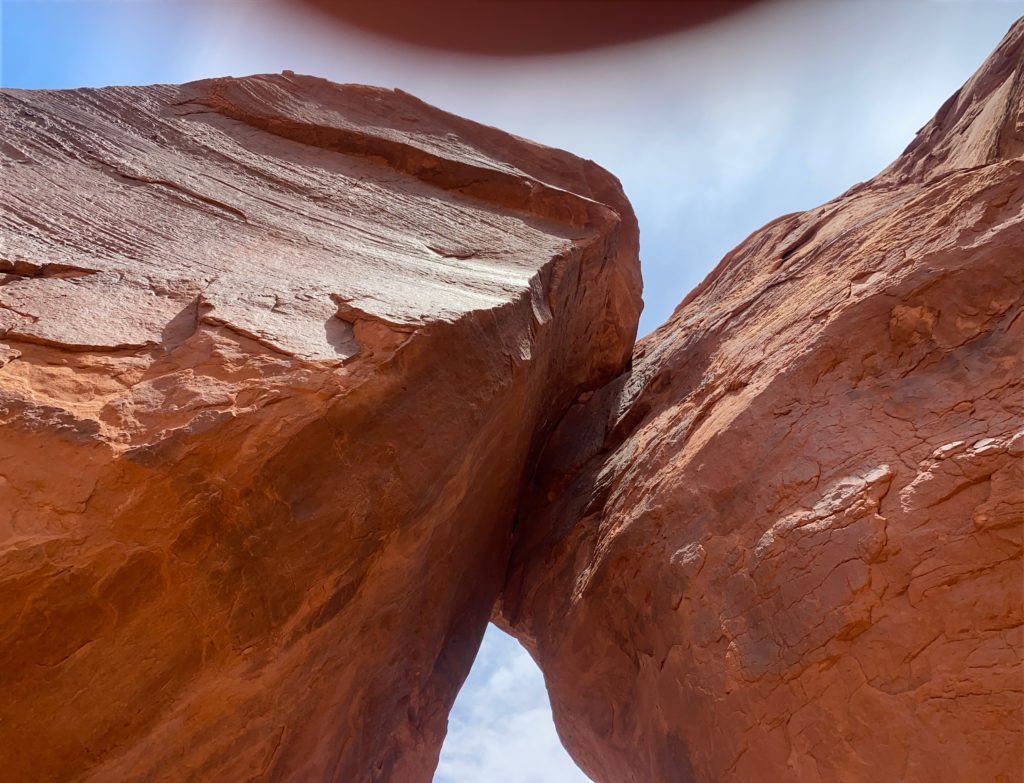
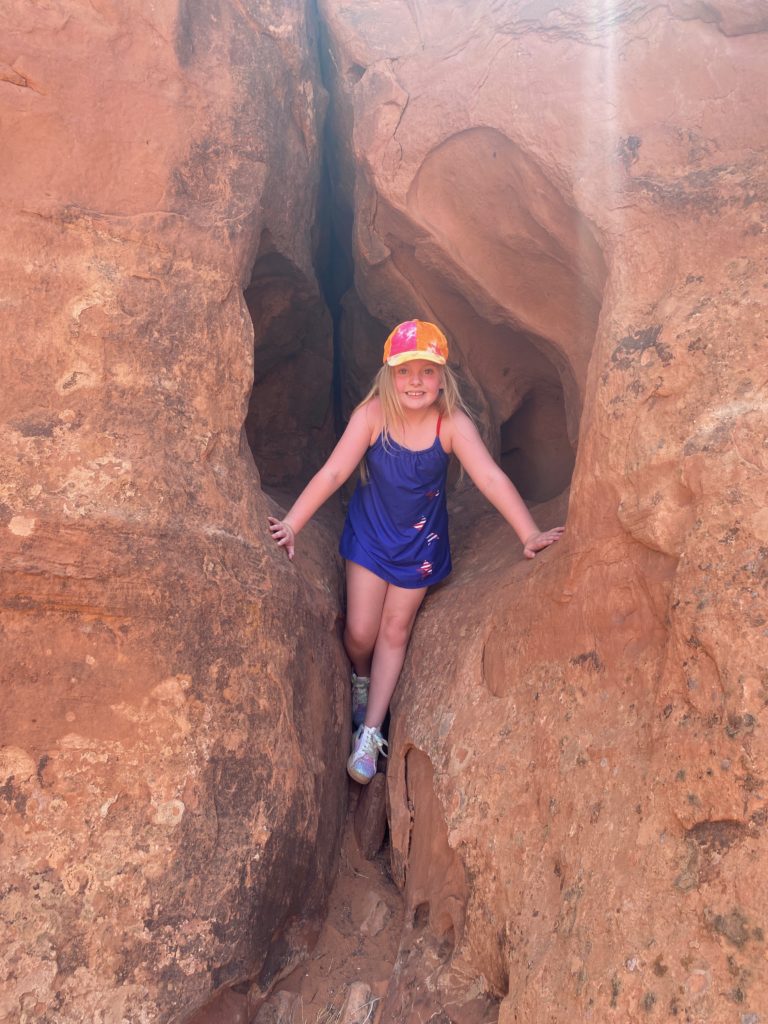
After we explored and were walking back, I told her I wanted to know more about Native American Culture and her experiences. She started by saying she grew up in a Hogan (the Native round homes or earth and wood). She lived there with her grandmother. No electricity or Televsion of course in the Hogan. Her grandmother would wake them up after 3-4 hours of sleep and make them go run 1-2 miles immediately after taking their sheepskins outside and hanging them up. She said this kept them strong so they didnt get weak. (This seems to be a theme since Native Americans were forced onto reservations- they believe that being in one place makes you weak and fat.)
She also told us also that her grandmother would make all of the children vomit bile in the mornings because it would keep them from getting gallstones. She still says this works because she doesn’t have gallstones today.
She also explained the Juniper Trees and how her culture would use every part of the tree. The big trunks would become pillars for the hogans. The small branches for firewood. The bark would be used for insulation between the logs and for fire starter. The berries would be used to dye sheepskin blue. The greenery would be made into tea or burned to kill toxins and virus in the air. She said a lot of Navajo have been burning the juniper in their houses with Covid. Then then use the ashes to mix in with the blue corn masa to give it an extra flavor. I really wanted some of her cooking 🙂
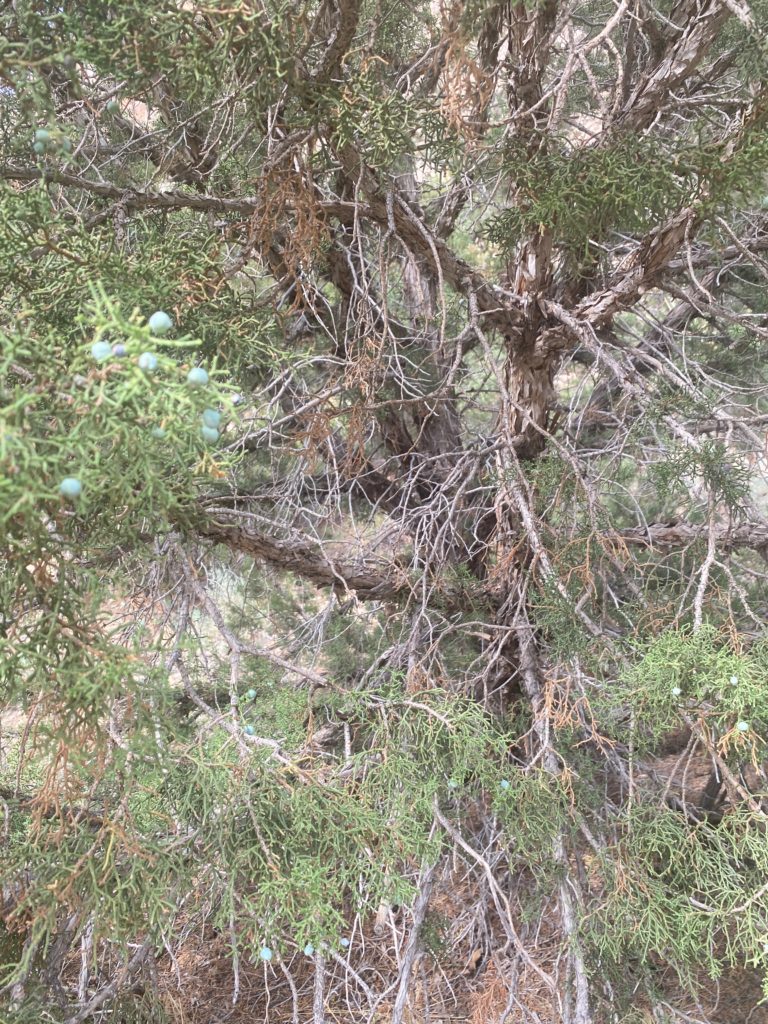
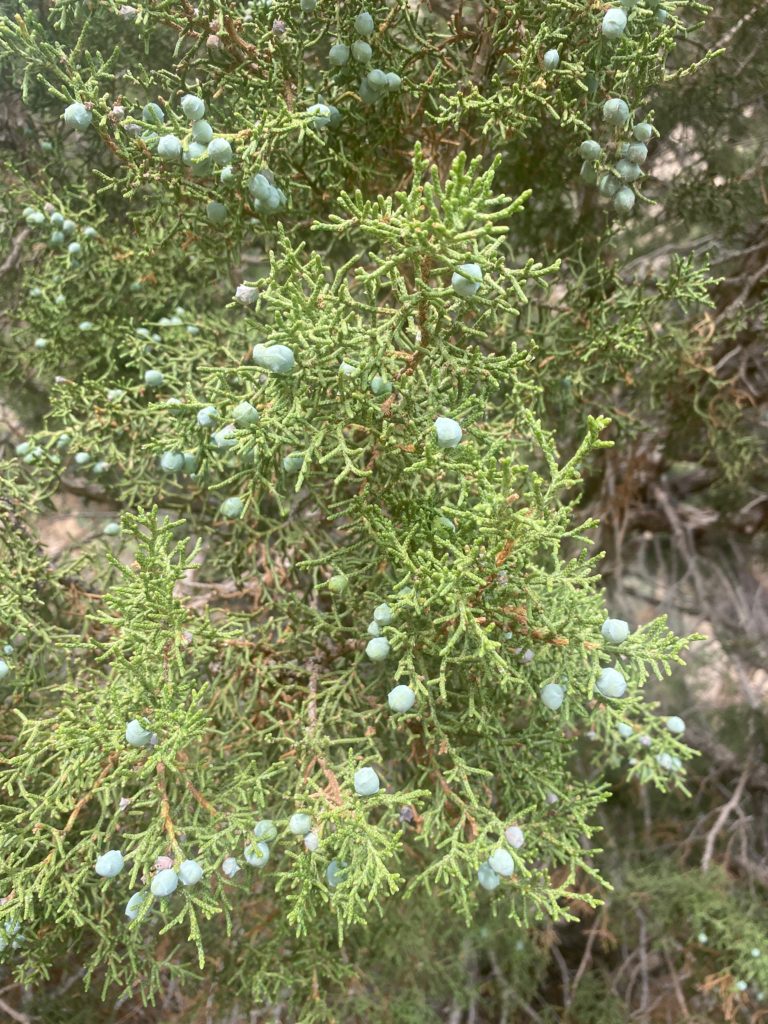
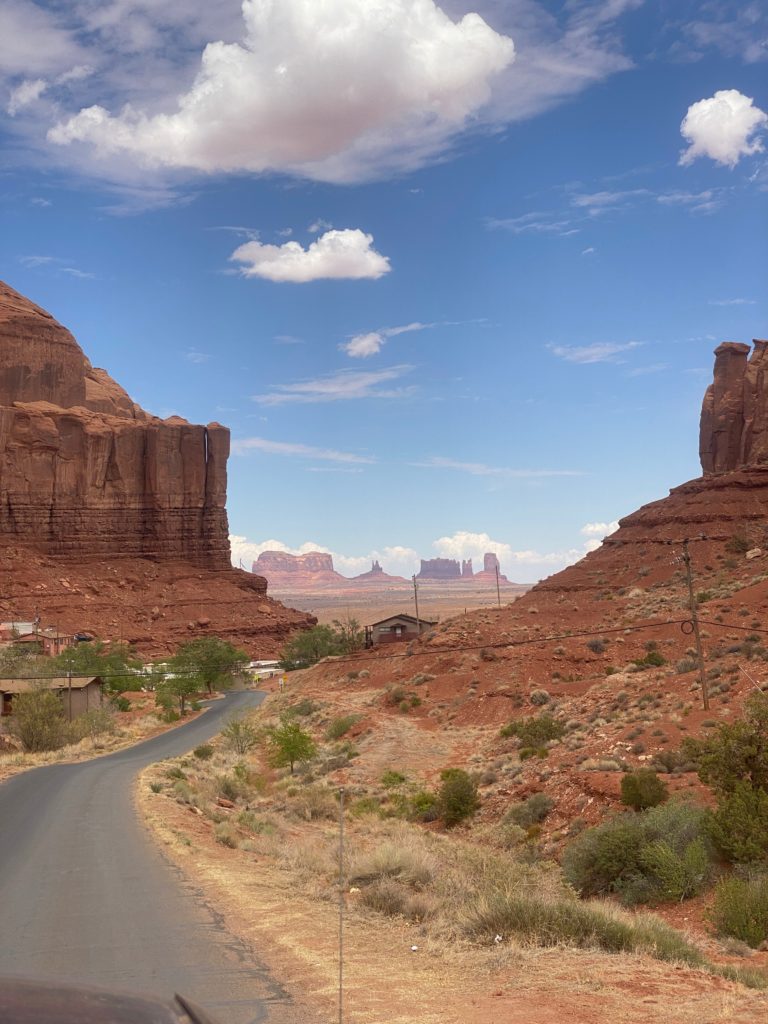
She talked about how the youth today- it was all electronics. No one wanted to herd sheep anymore. All they want to do was live in a trailer, not a hogan and be lazy. They cant wait to leave the reservation to go to a bigger city. They are losing their culture and their language. She told us that with their culture, you take care of you elders, but even that is going away. She says her father in law, no one cooks for him now that his wife is gone or brings him leftovers except her. She says that it used to be that you stopped by to see people- now you have to call or text. To her, someone should always be welcome anytime and you should always have food to cook for them. She said now, people don’t even cook for others when they stop by!
I was seeing a lot of parallels to rural American farm culture. I don’t think what she is experiencing is unique to the native american experience. I think it’s just that the native culture and good hardworking midwestern culture are a lot alike. Treat each other well, be hospitable, take care of your elders, participate in your community and help the greater good. Basically respect things and people around you and be a good person…and we seem to be losing that all around.
It was a great tour and a couple great hours to speak with a Navajo elder woman who had such ties to traditional Navajo practices. She told us about the clans and that they all had a special greeting that was shared between them that is passed down to each generation, but that nowadays a lot of people don’t even use the greetings. She drove us back and we parted ways. I would totally recommend that tour company. I think it’s just a husband and wife, but I could be wrong.
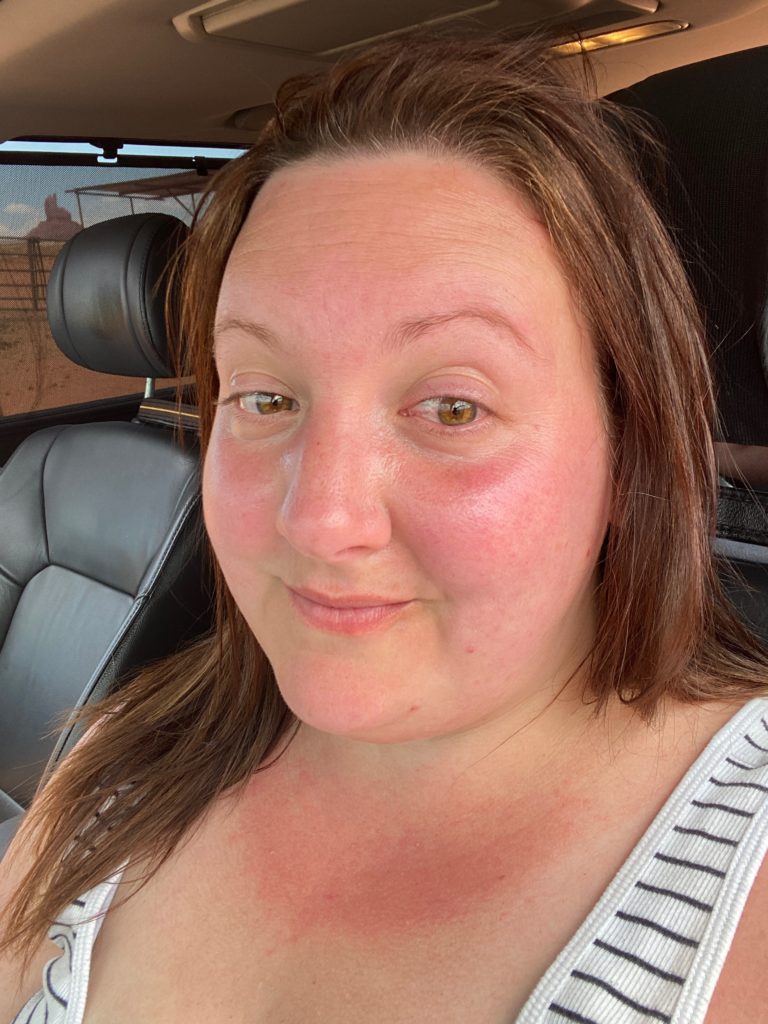
We headed on North further into Utah and passed this big beehive rock with a hole in the bottom like it was a giant beehive! and the road signs all have the highway numbers in a beehive emblem… so we thought “this must be THE BEEHIVE! What is this thing??” nope. Wrong. This rock was nothing. ha It’s a big huge rock that has weathered like a beehive. They blew up a hole in the bottom to look like a beehive because they needed a place to store salt licks and food for the cows. ha Its privately owned. BUT, we did find out that Utah is the Beehive State.
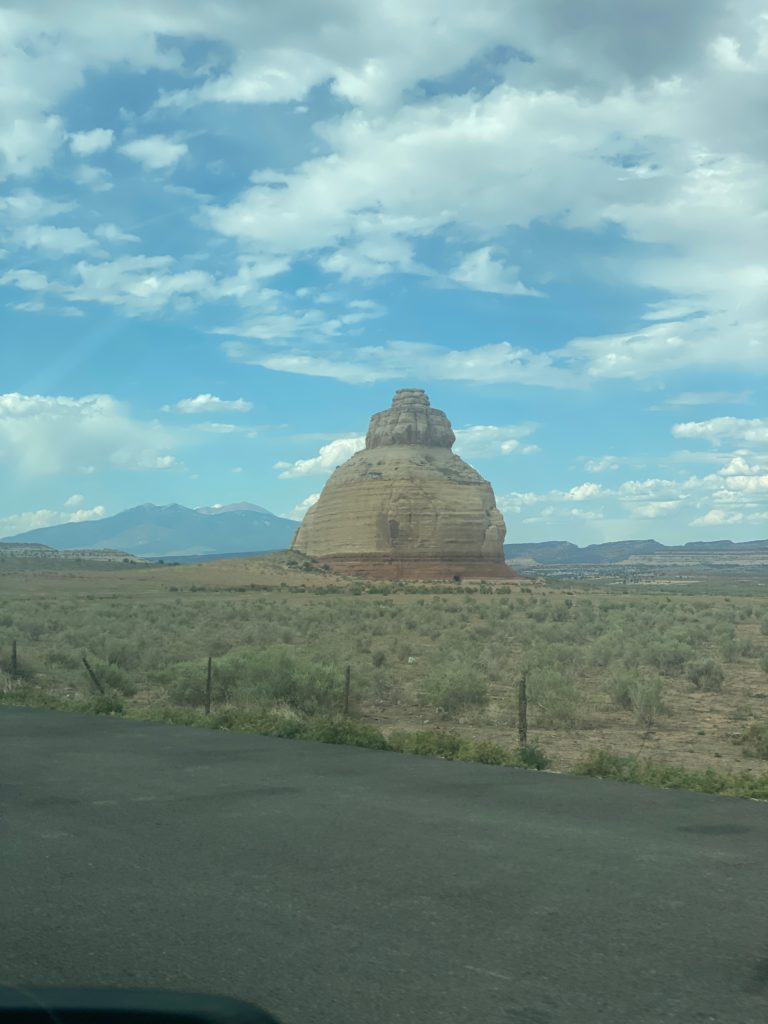
The beehive is a symbol of hardwork and industry and was chosen as the state emblem in 1848.
We went to the south edges of Canyonlands National Park to visit the true Newspaper Rock in Monticello, Utah.
I really find the petroglyphs cool. I find it even more interesting that we don’t even know what most of these things mean! and that 1500 years ago people were walking through these same areas (that I can hardly drive through with the windows down its so hot… guzzling water bottle after water bottle from my insulated cooler! ha) and left these symbols of stories, trophies, words of warning…who knows. I think it’s amazing.
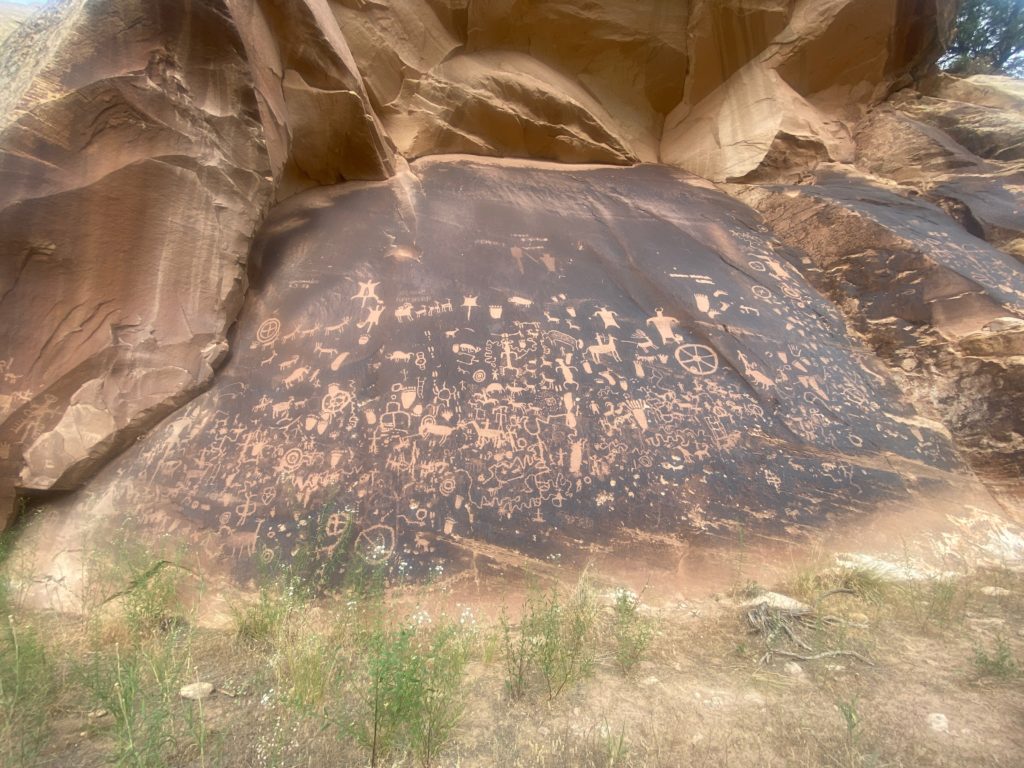
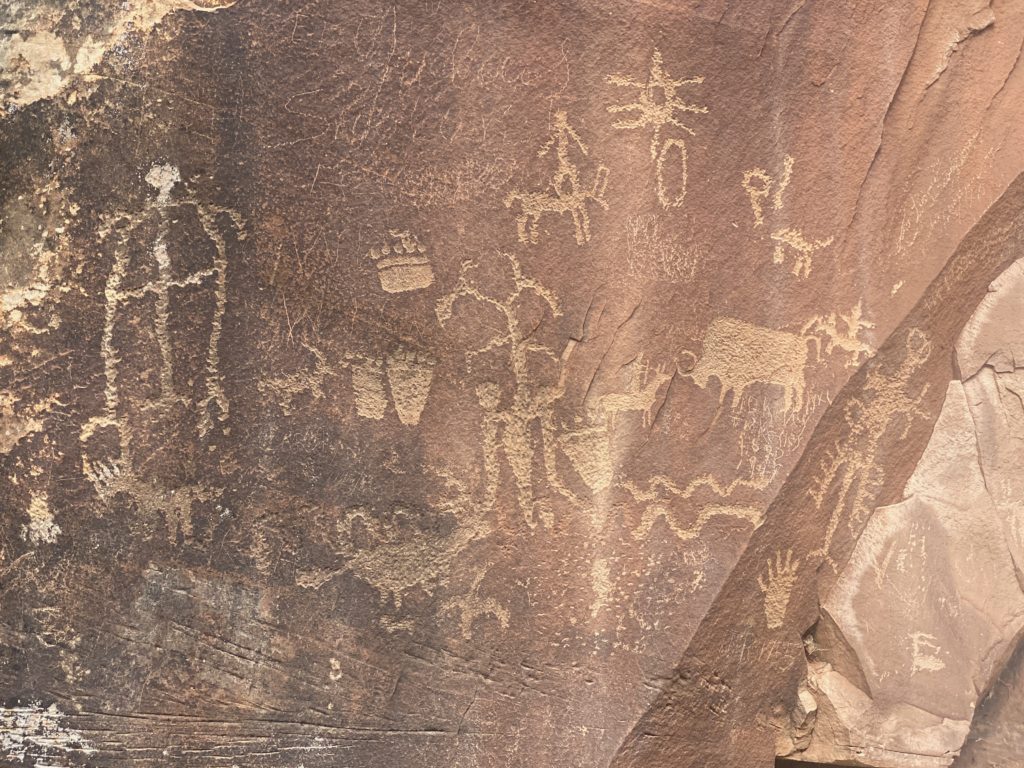
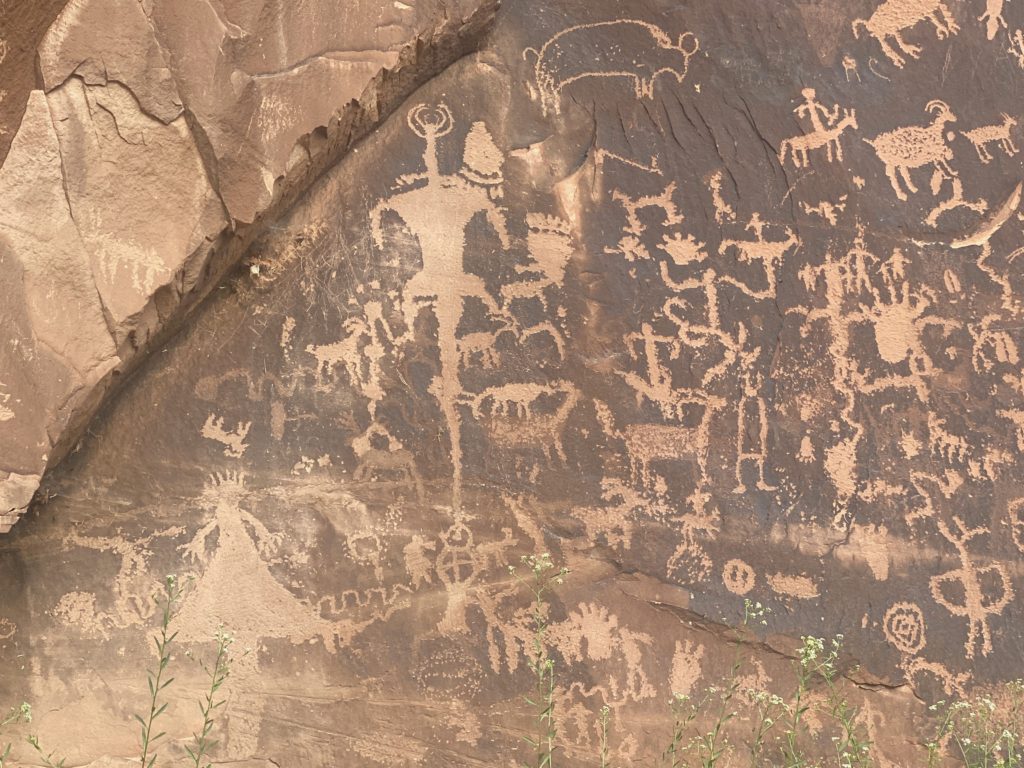
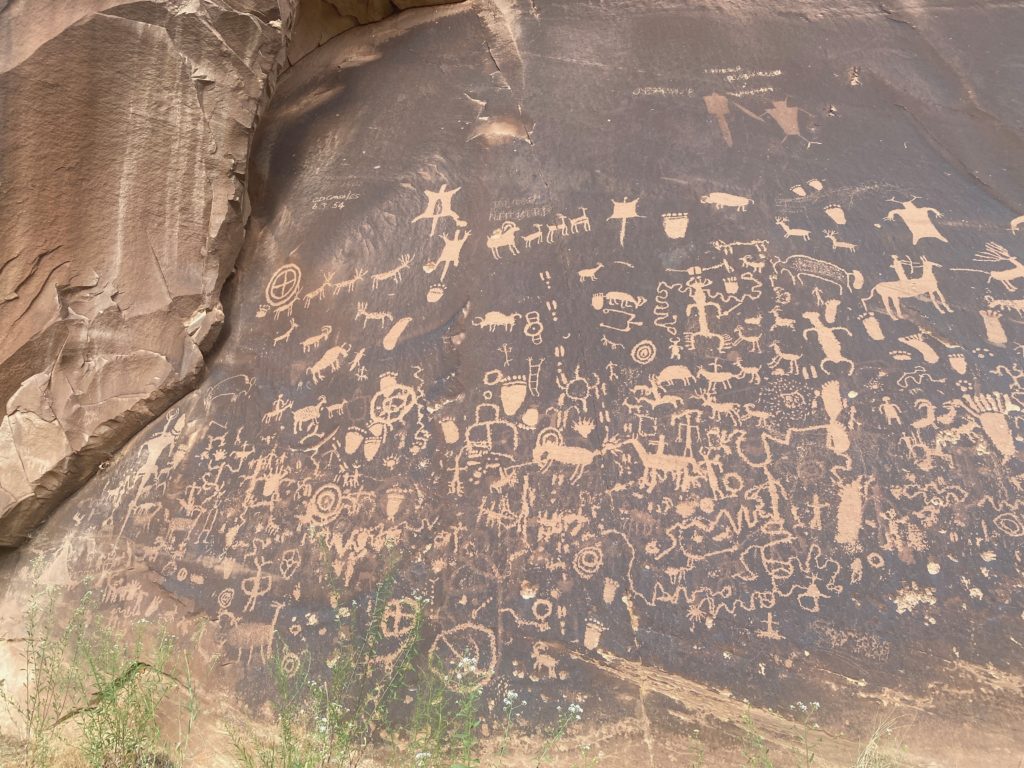
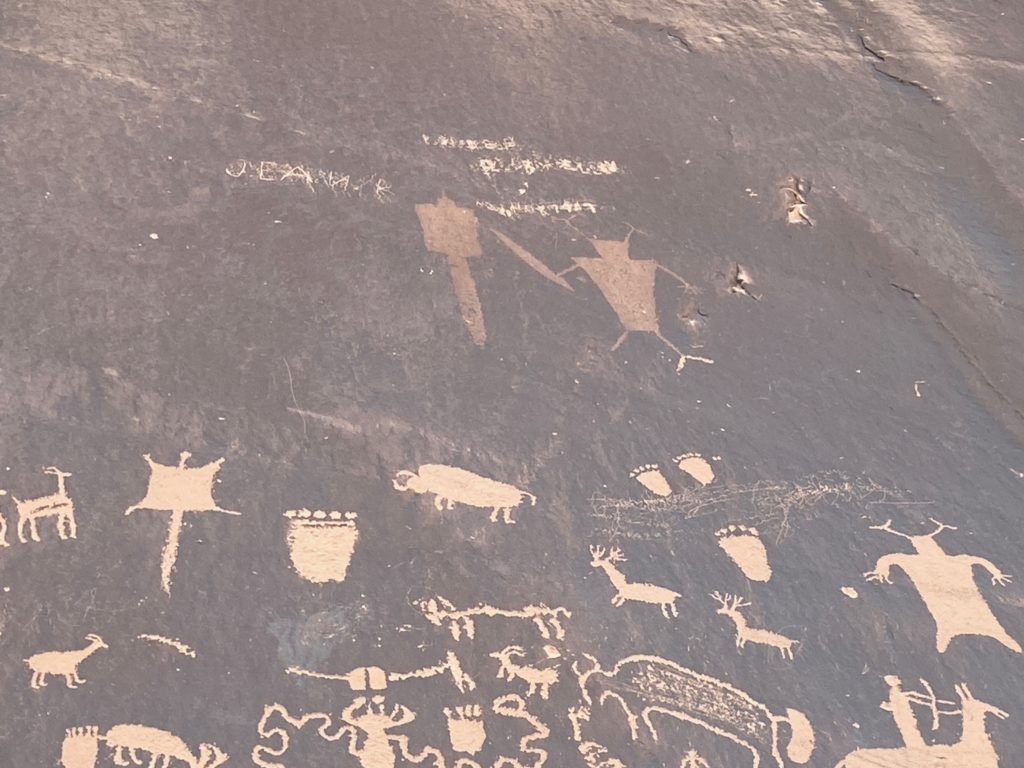
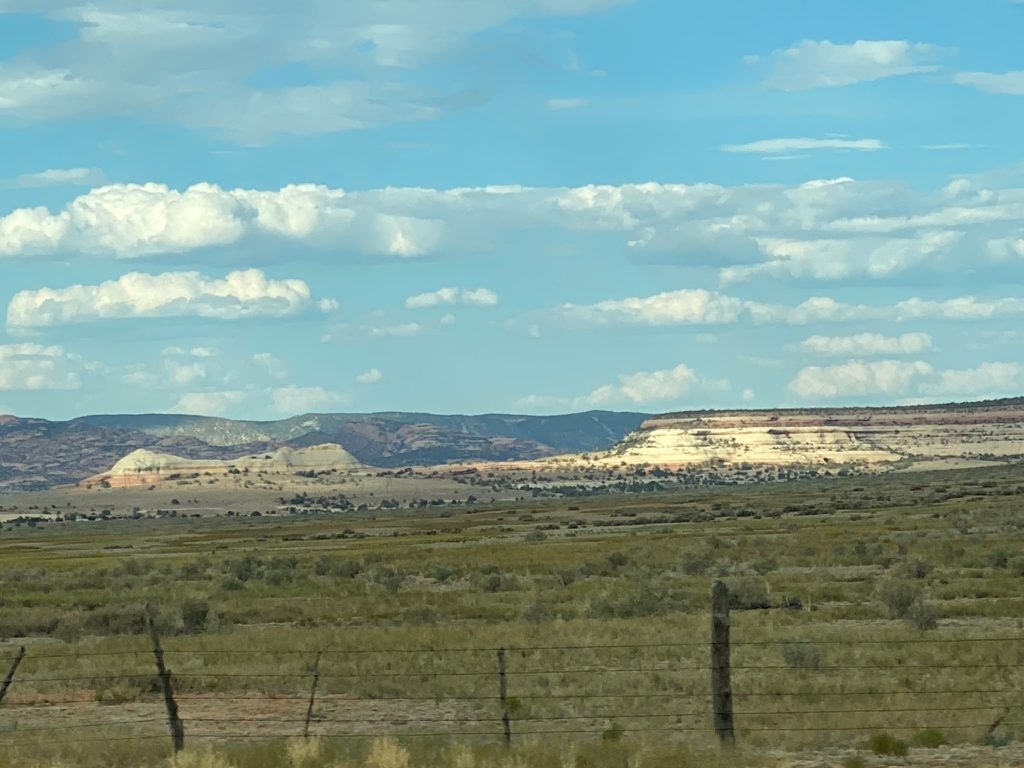
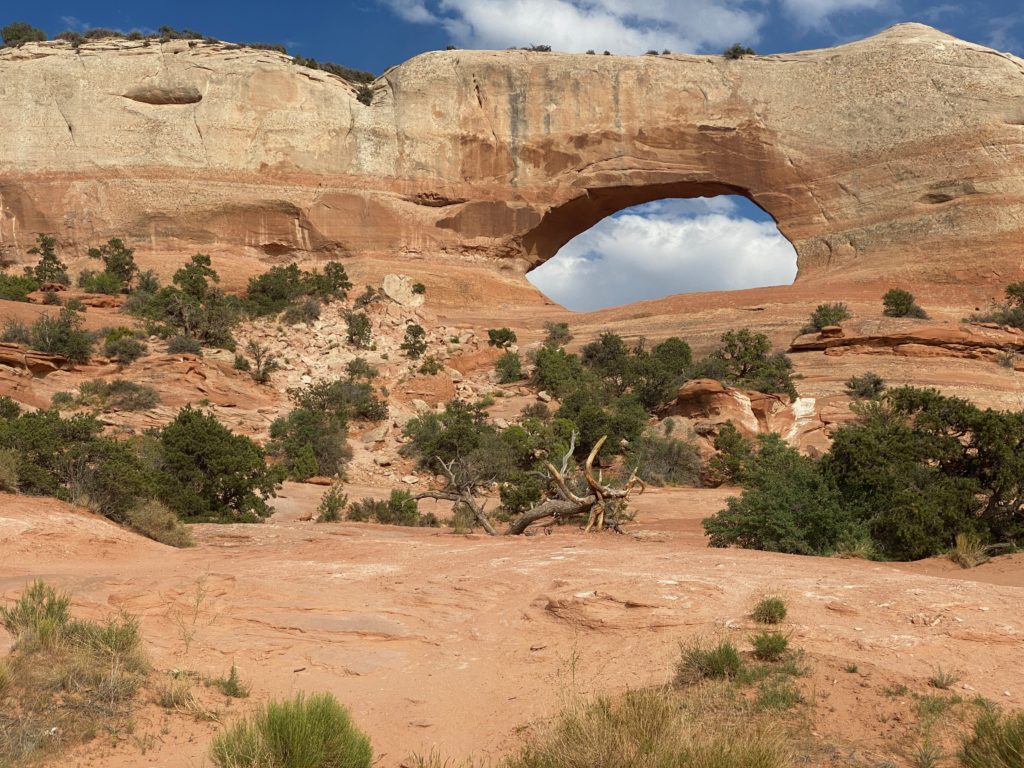
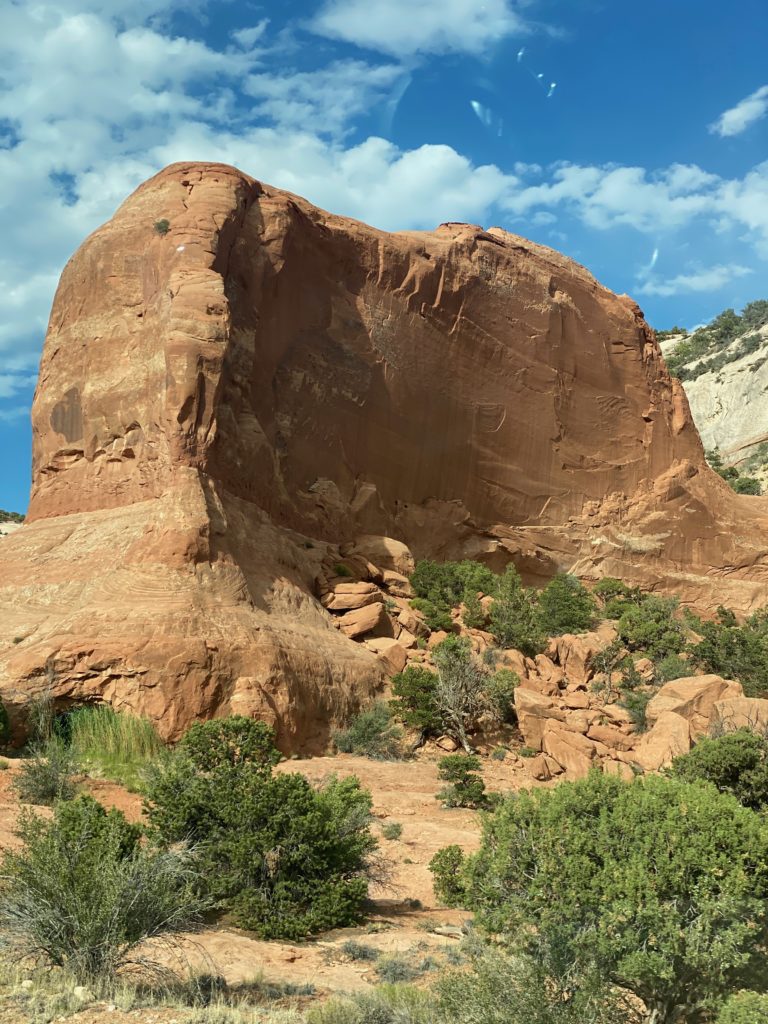
As we came into Moab, we passed Hole ‘N the Rock- a famous tourist spot where a family carved out a 5,000 square foot house into that rock hillside! They were already closed or we totally would have went.
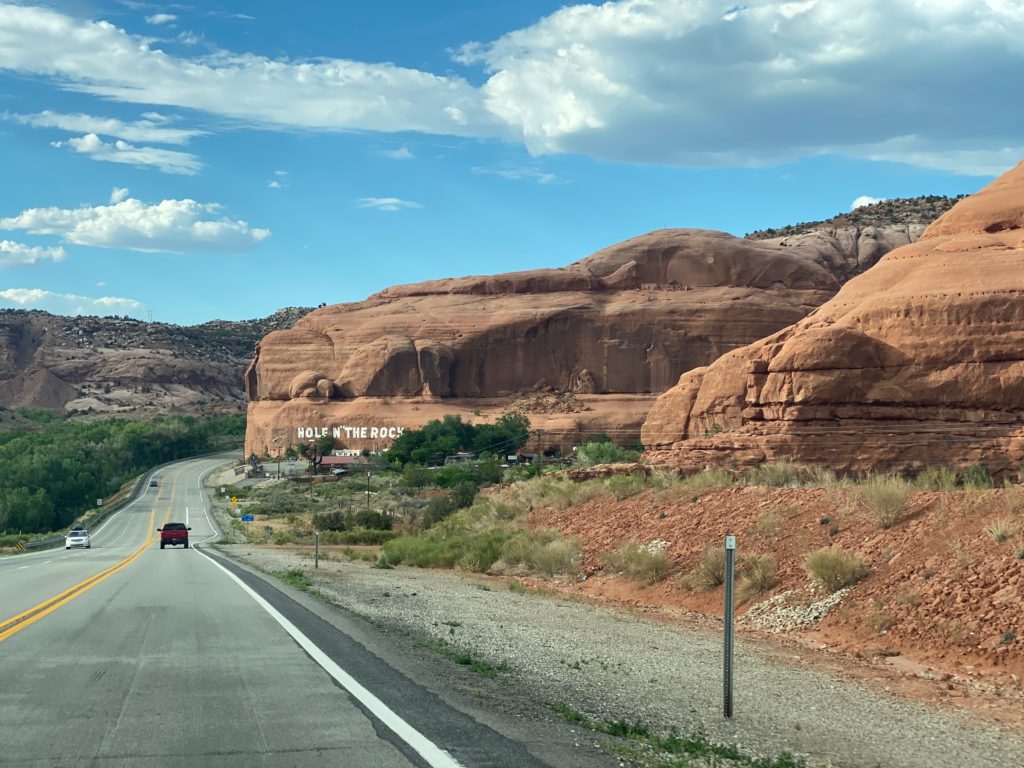
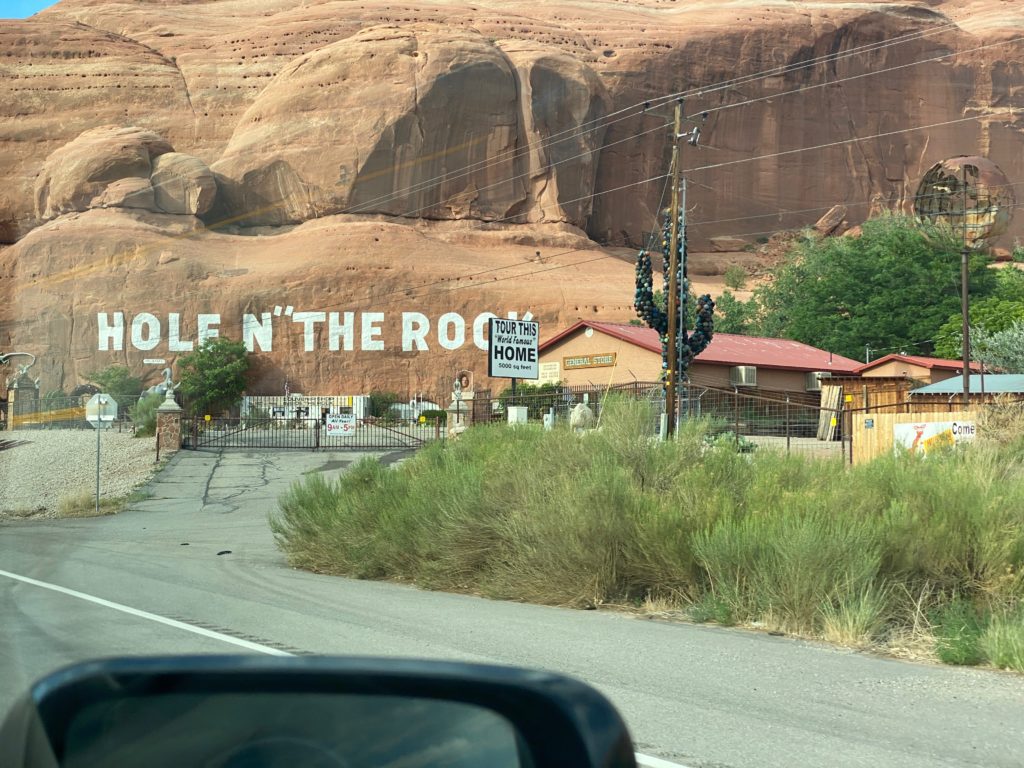
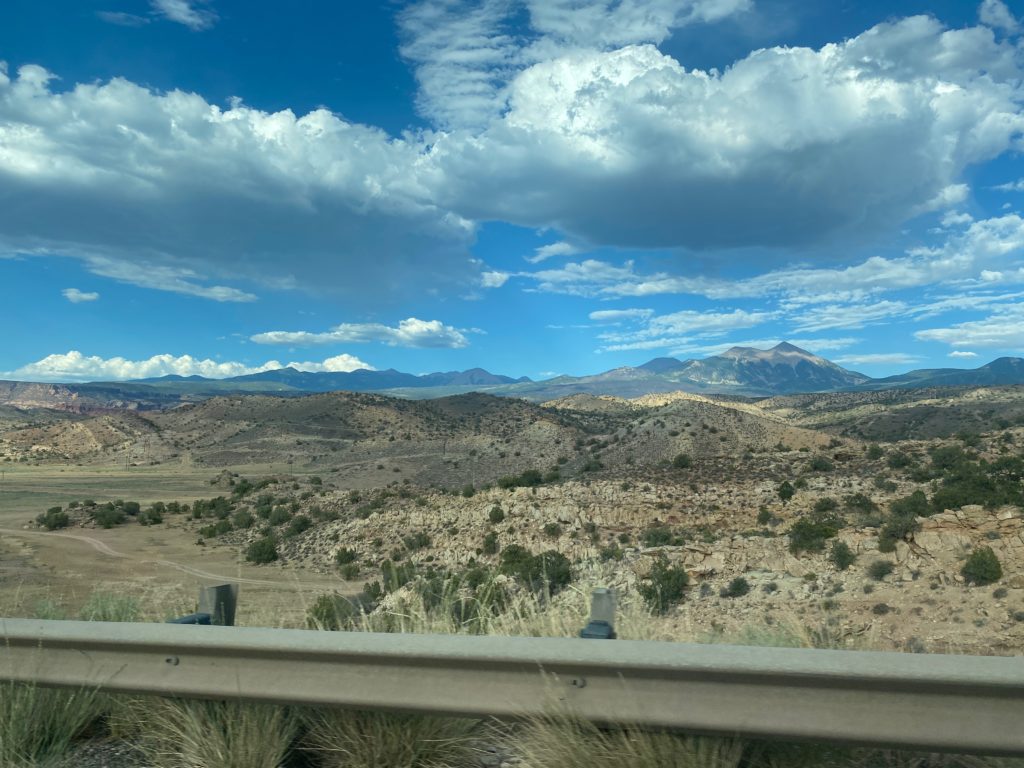
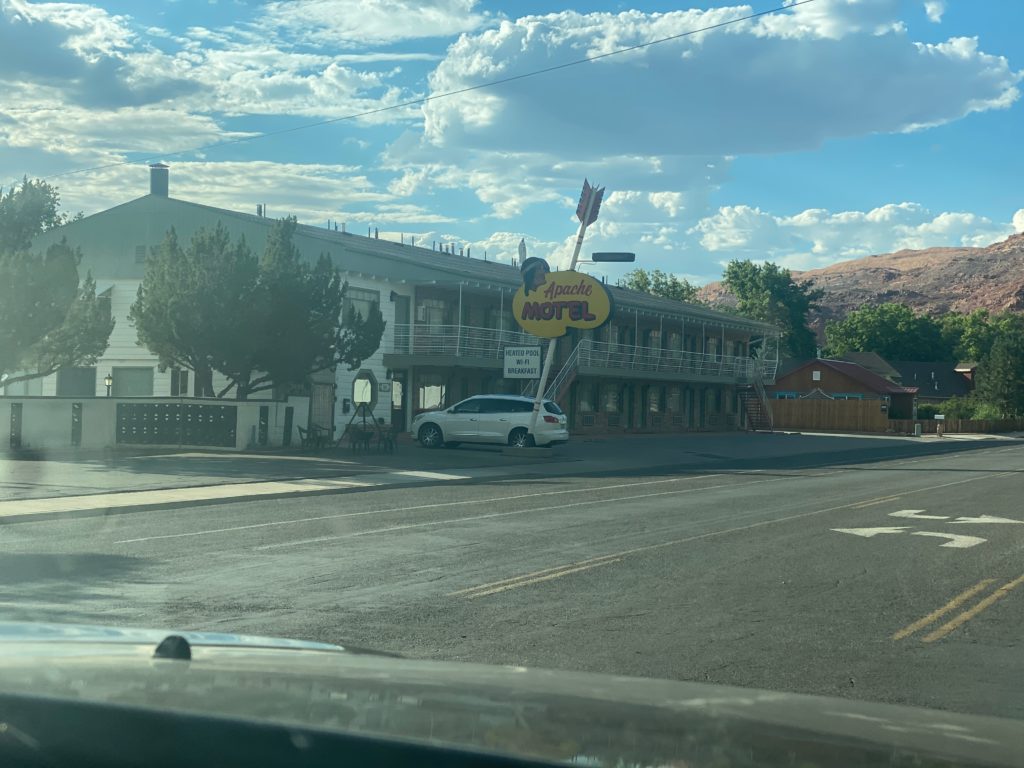
We got dinner from a great little Mexican place called Miguel’s Baja Grill in Moab, but I’m pretty sure it was my favorite meal of the trip so far.
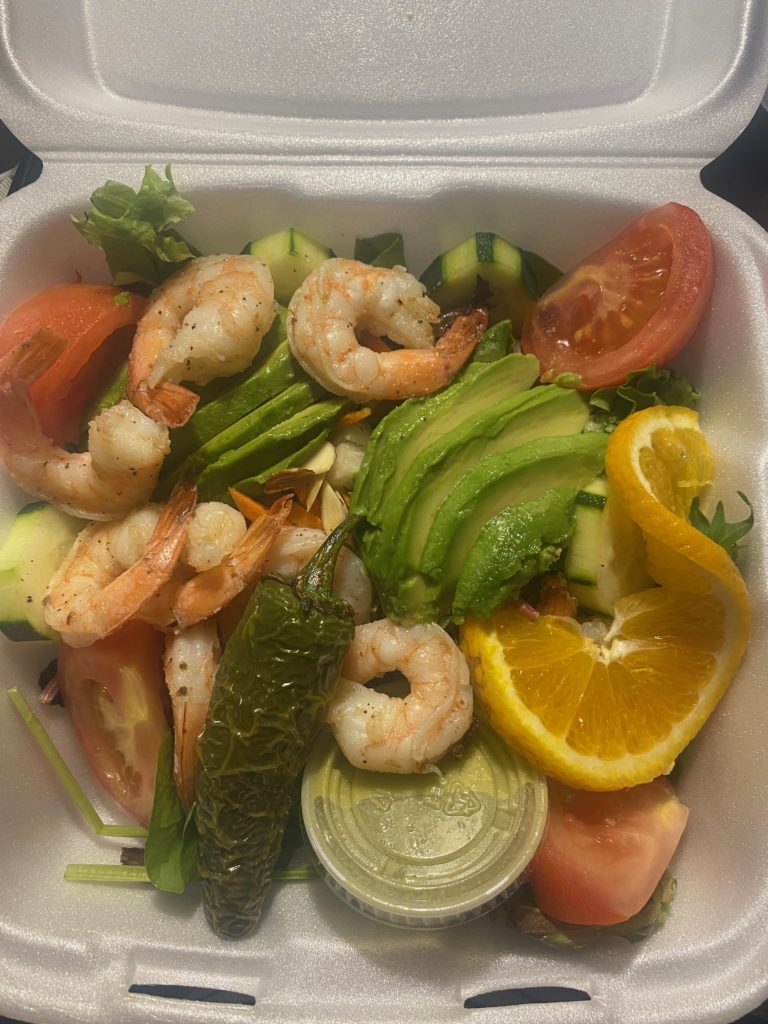
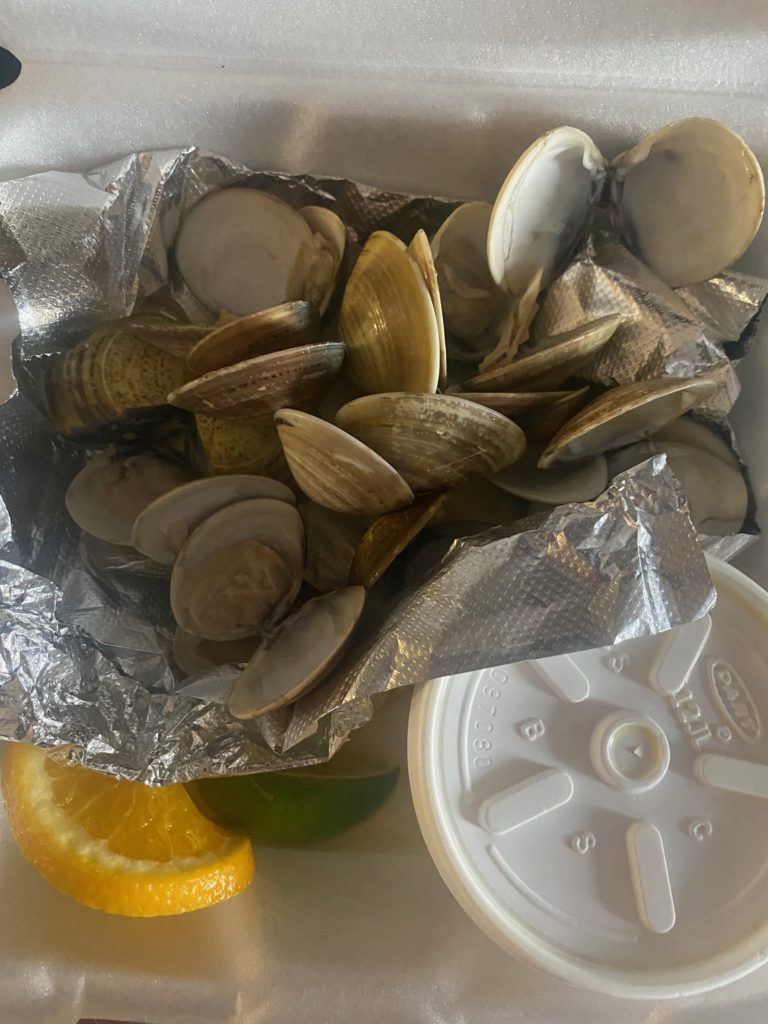
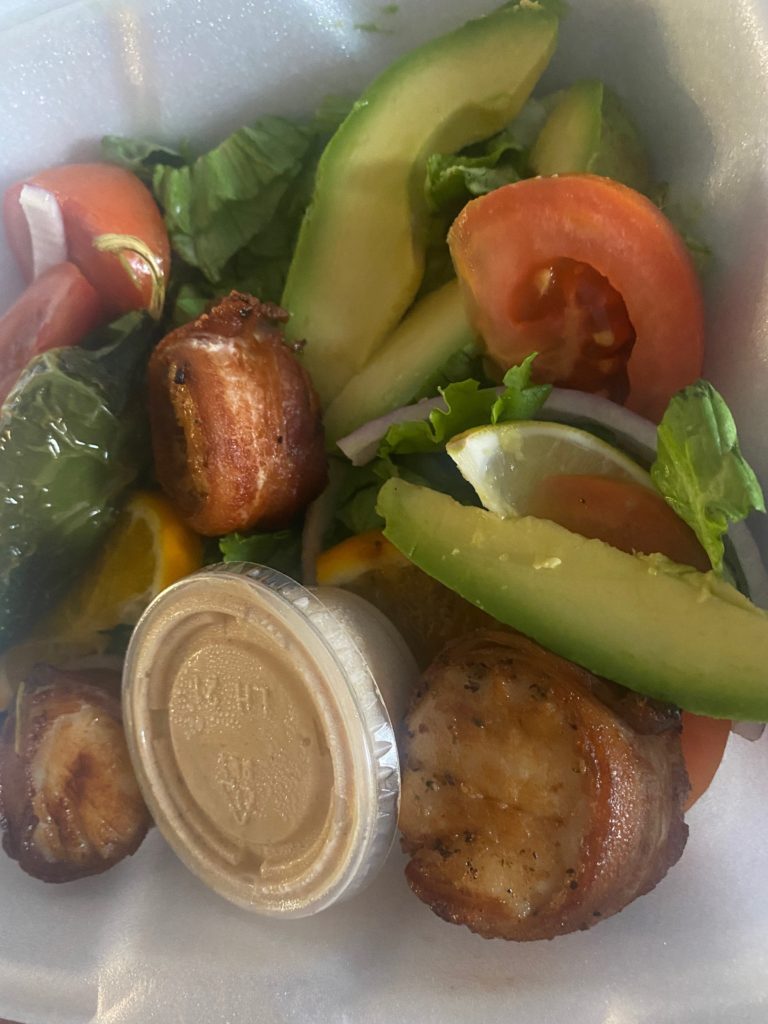
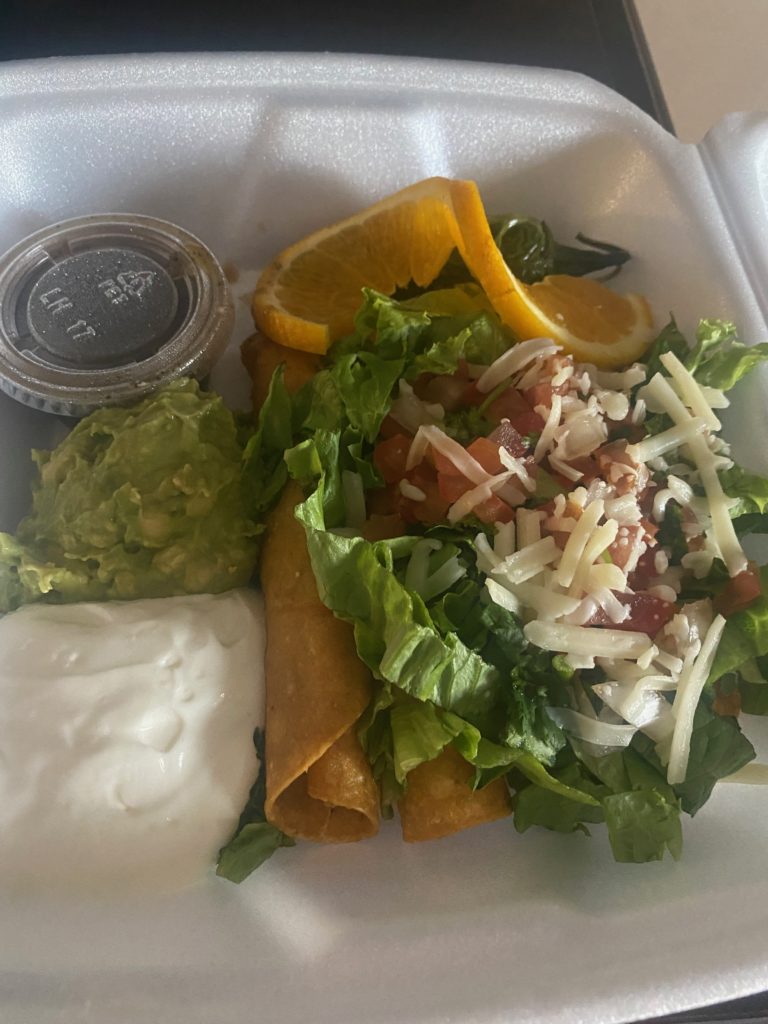
Tomorrow we’ll explore more around Moab and do Arches National Park.
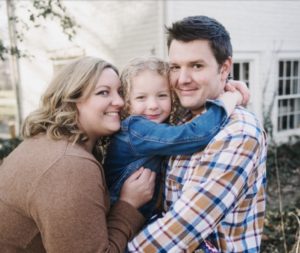
Leave a Reply